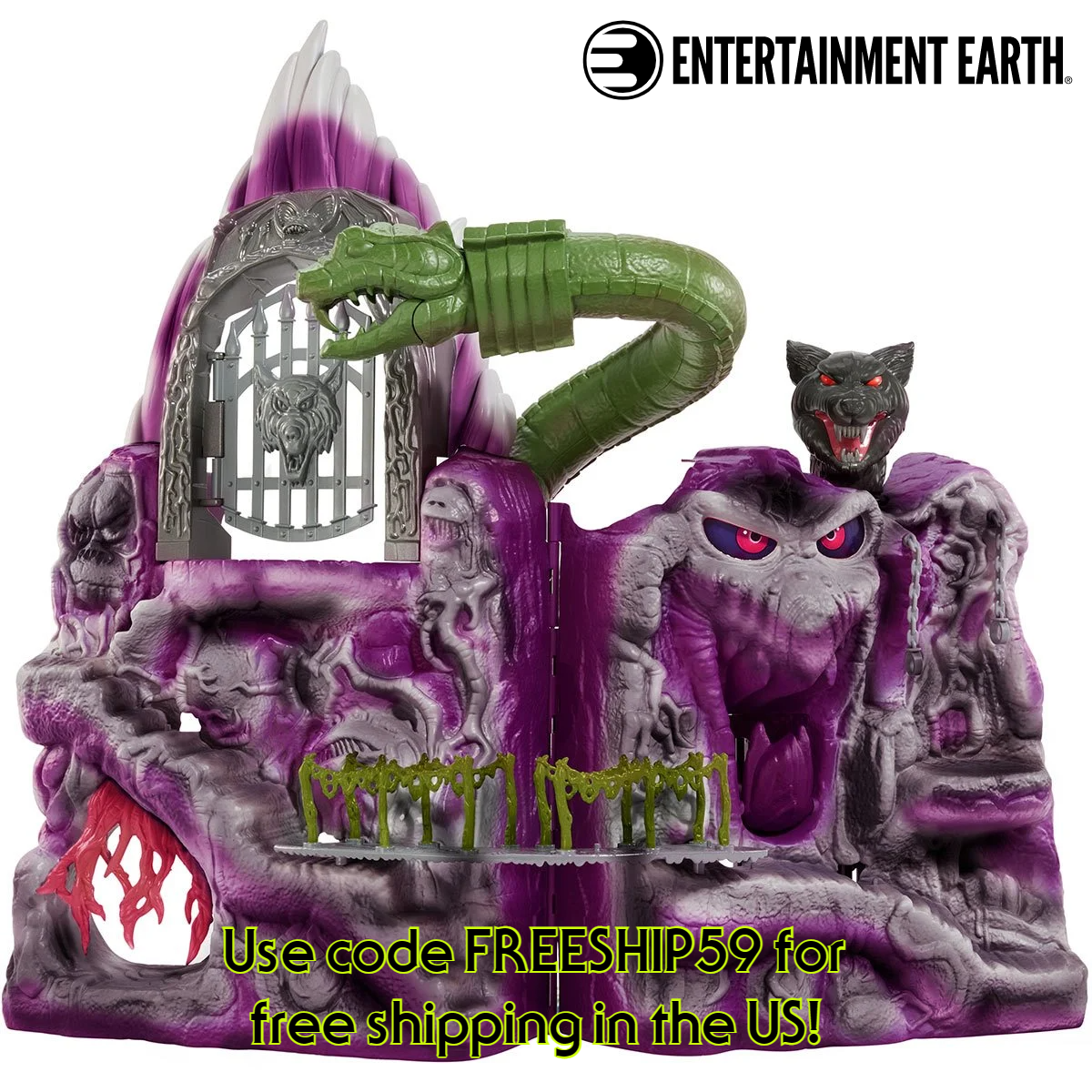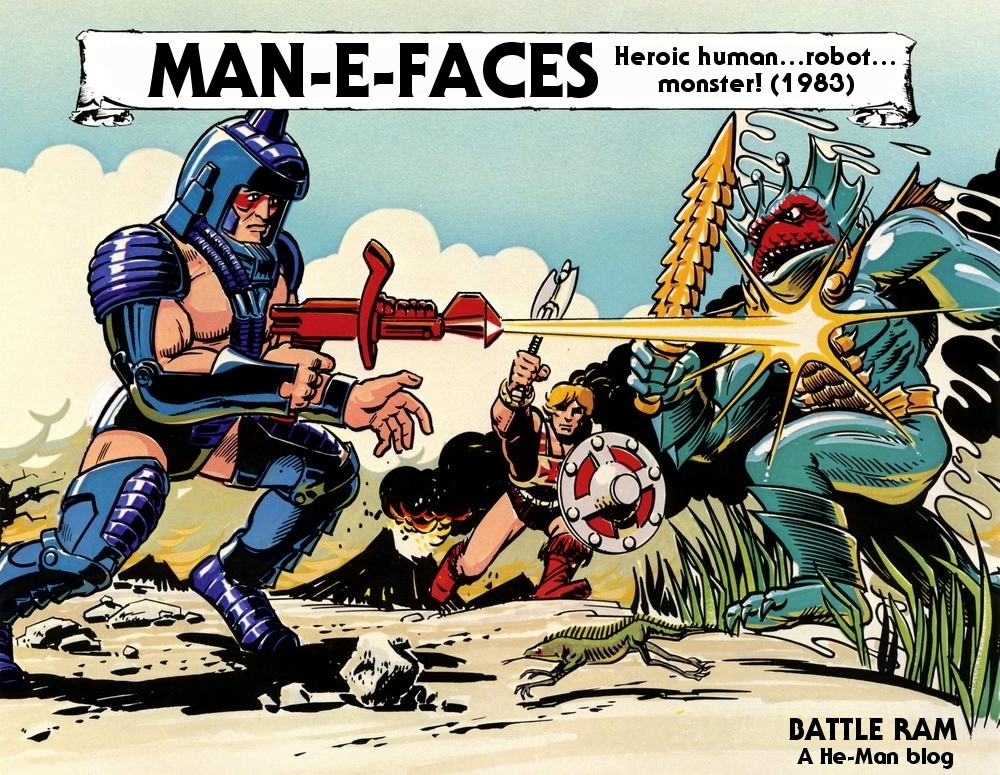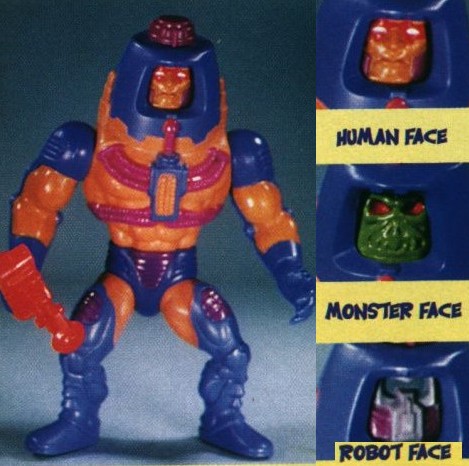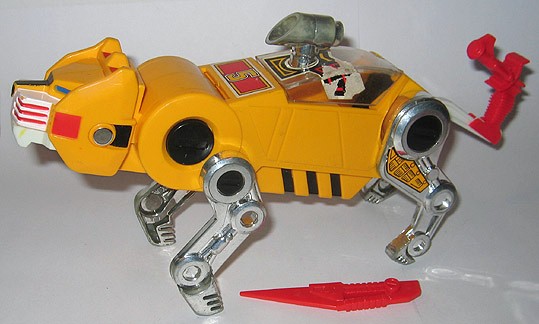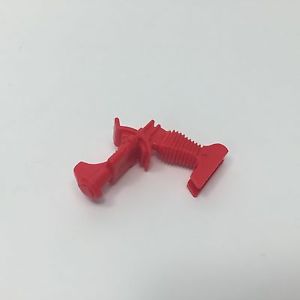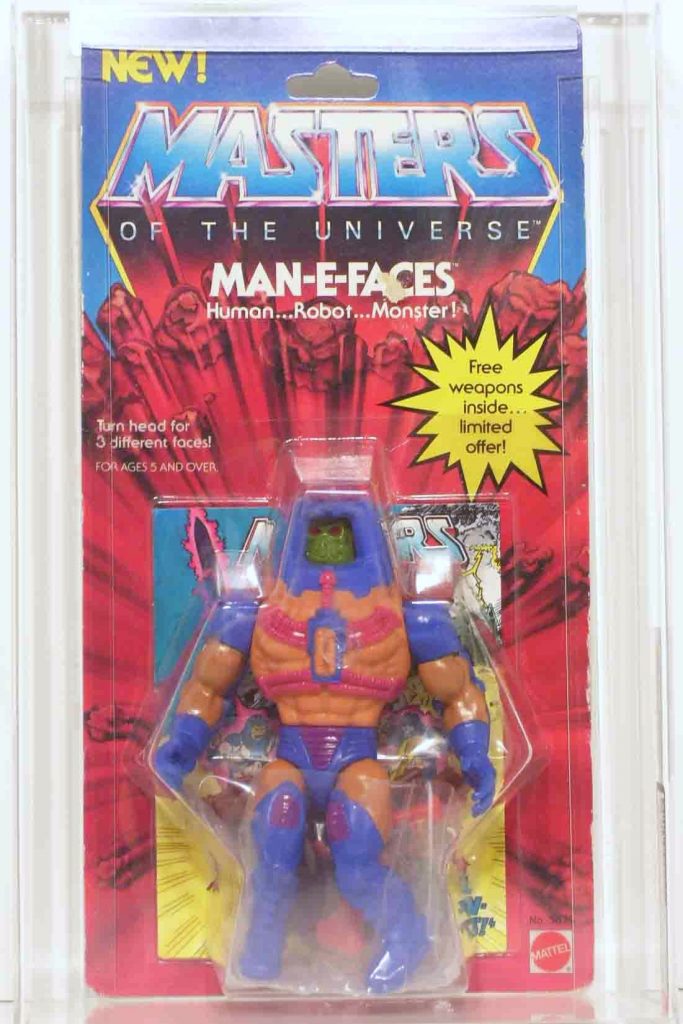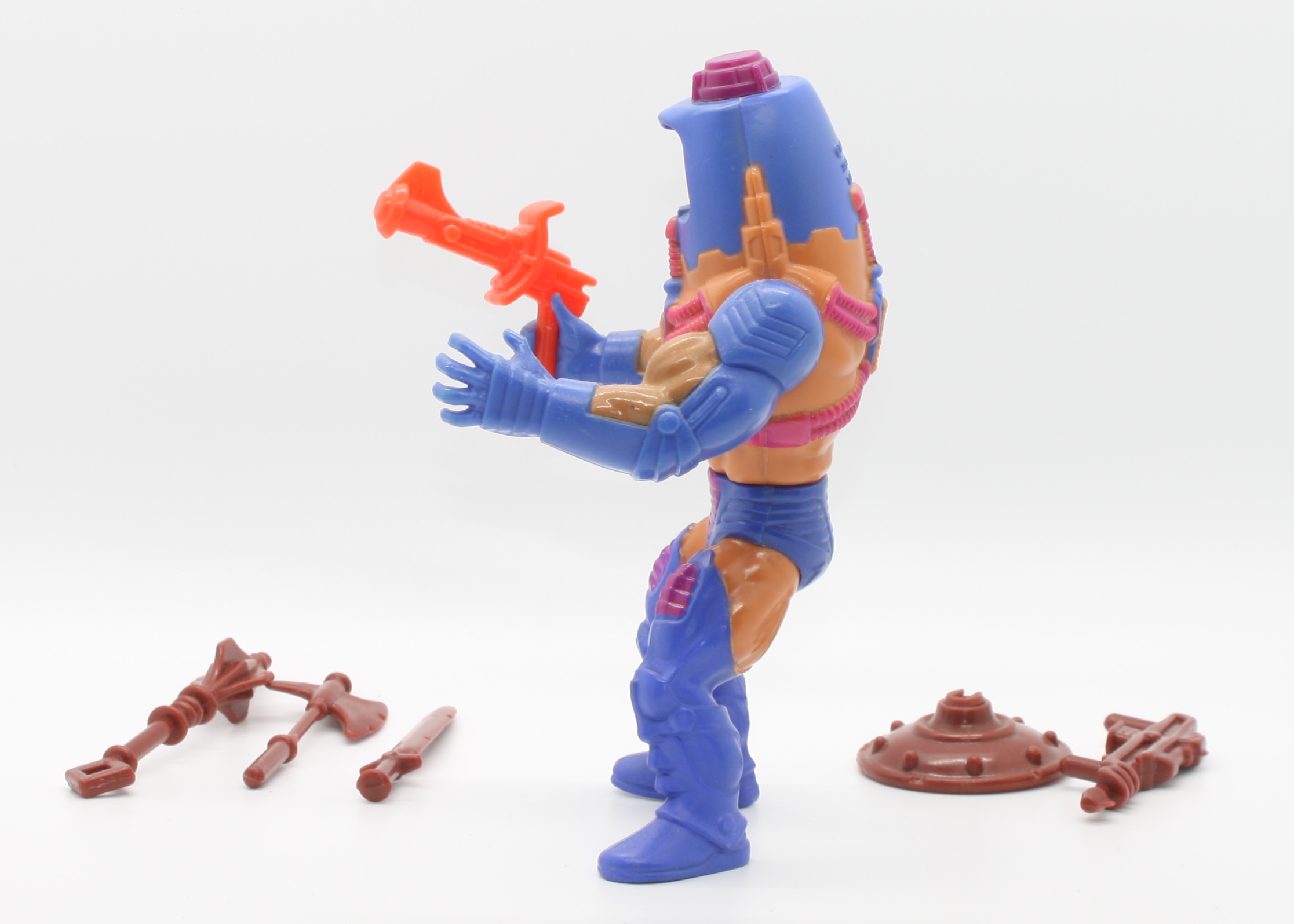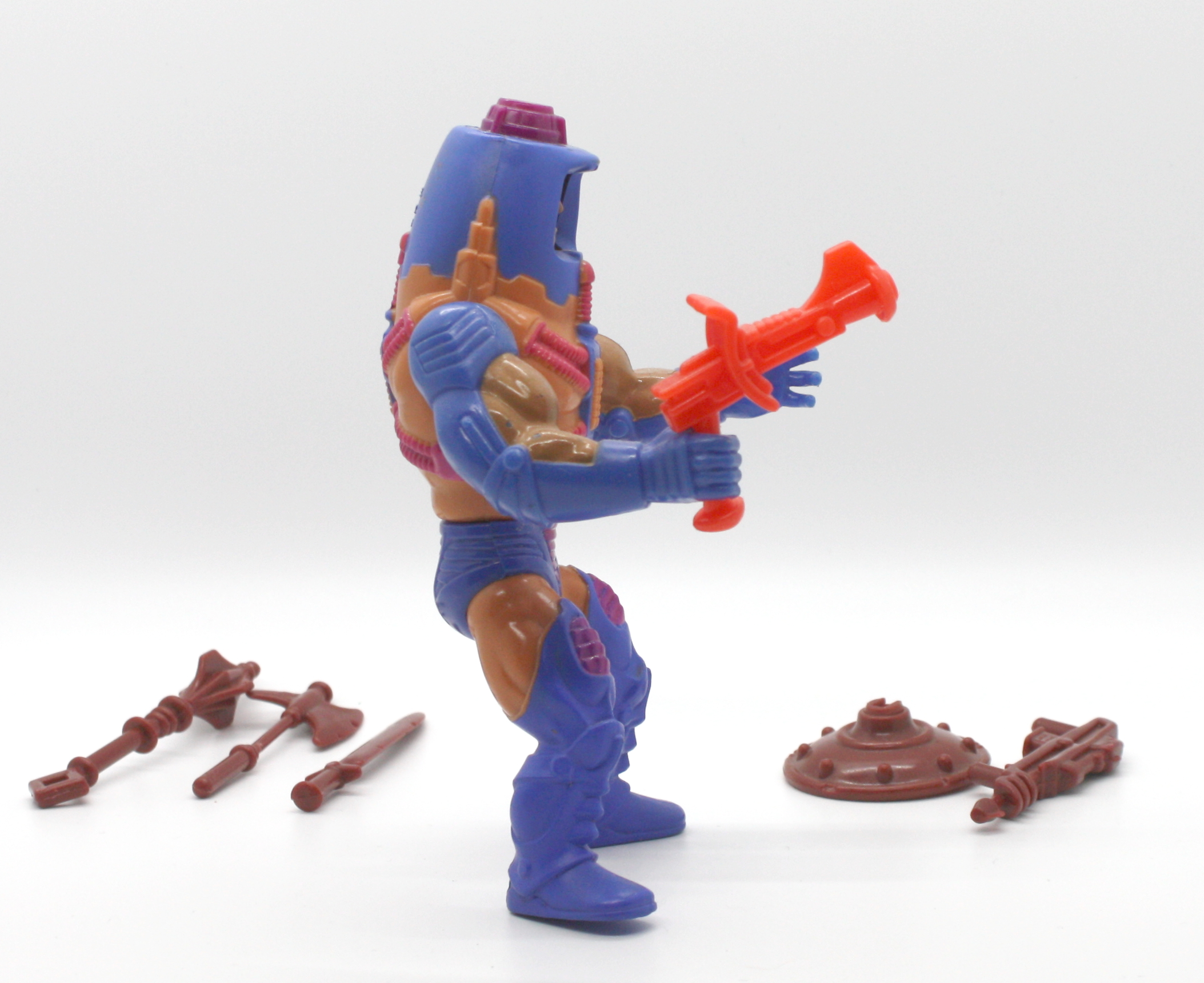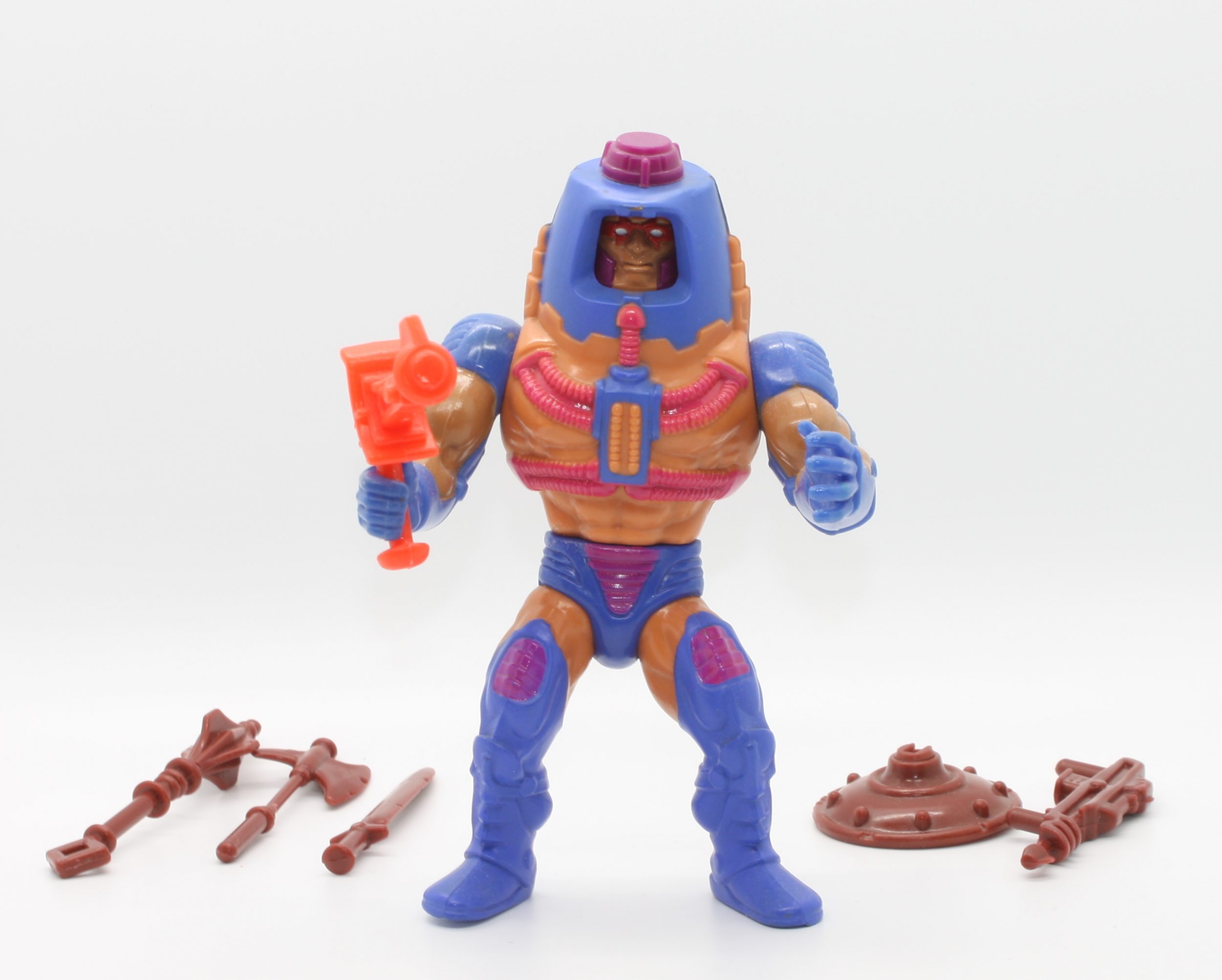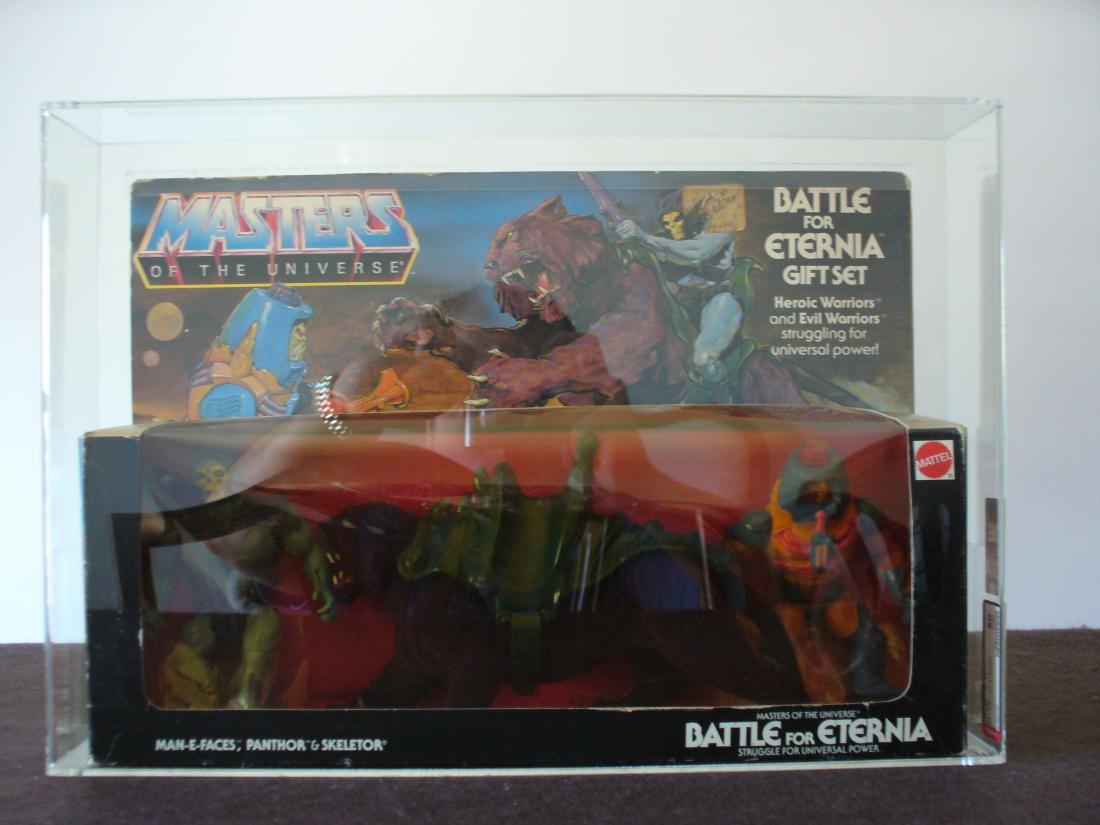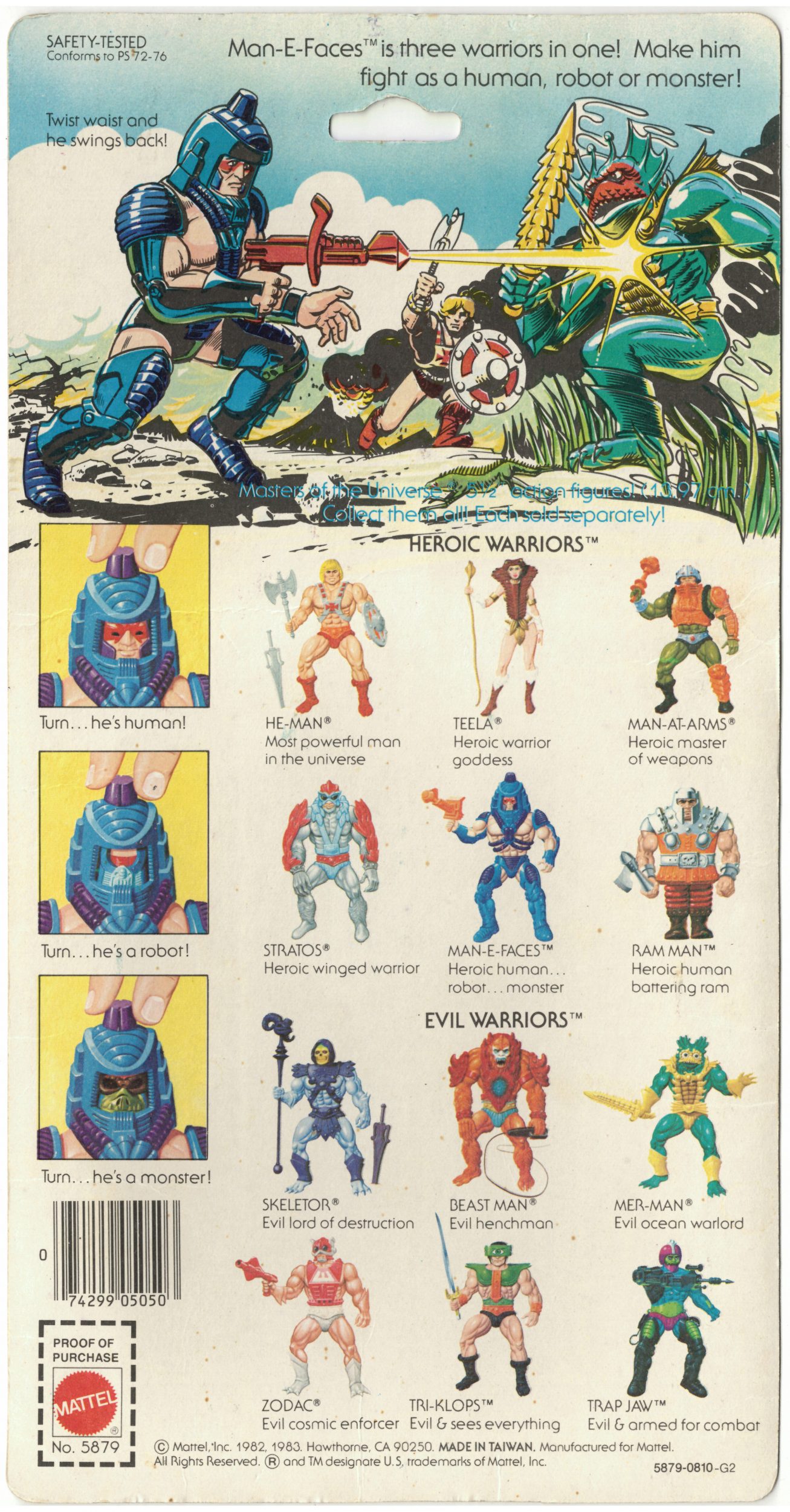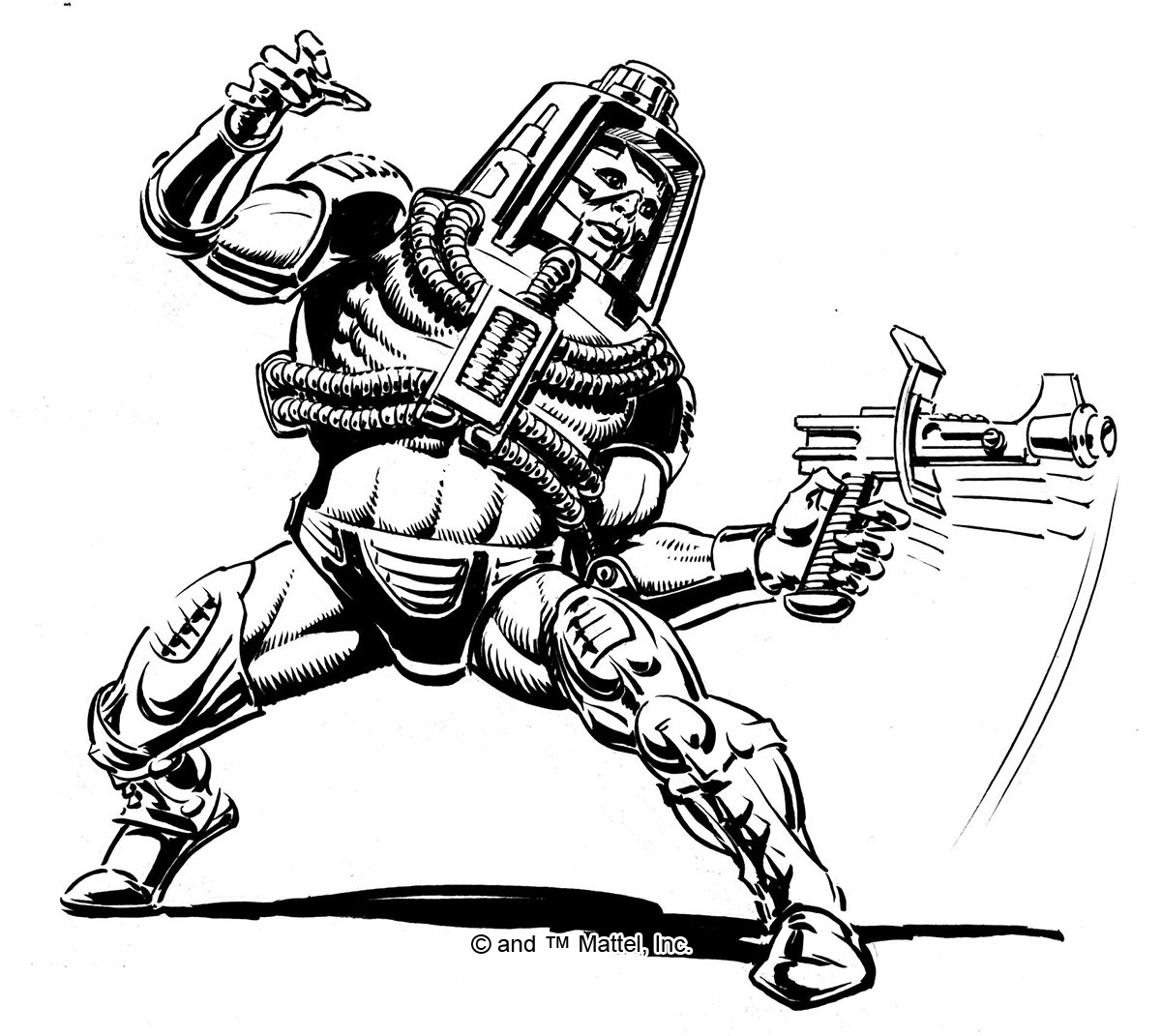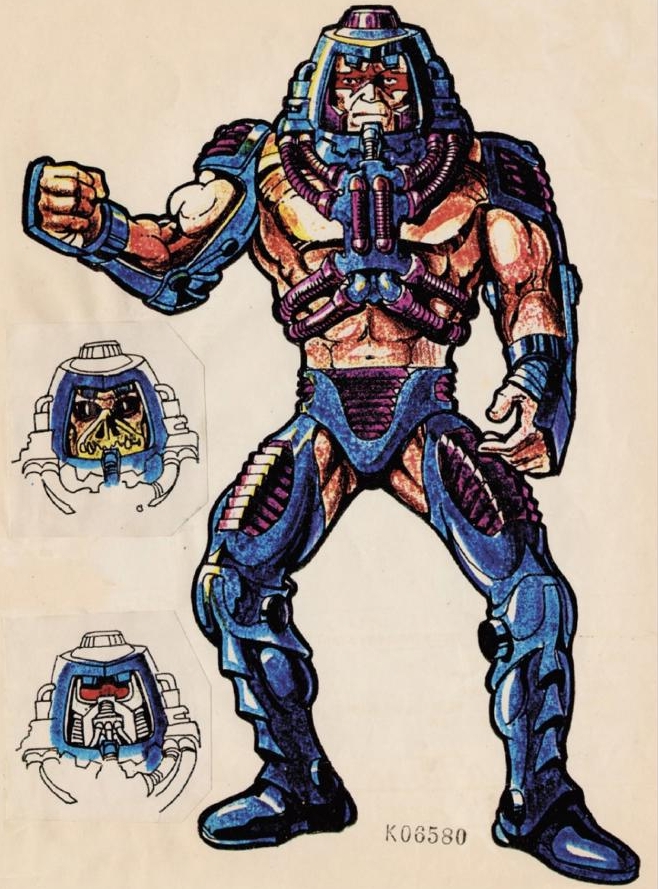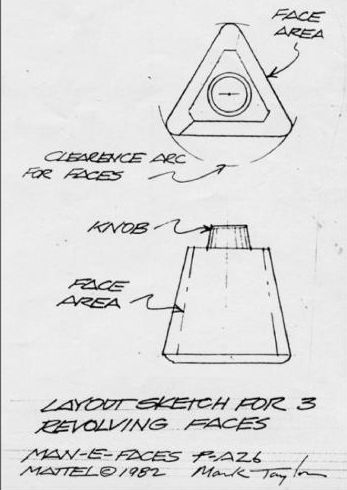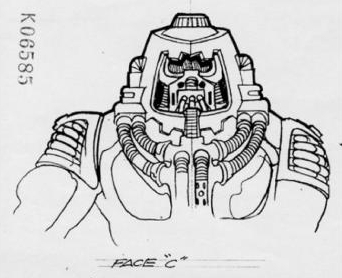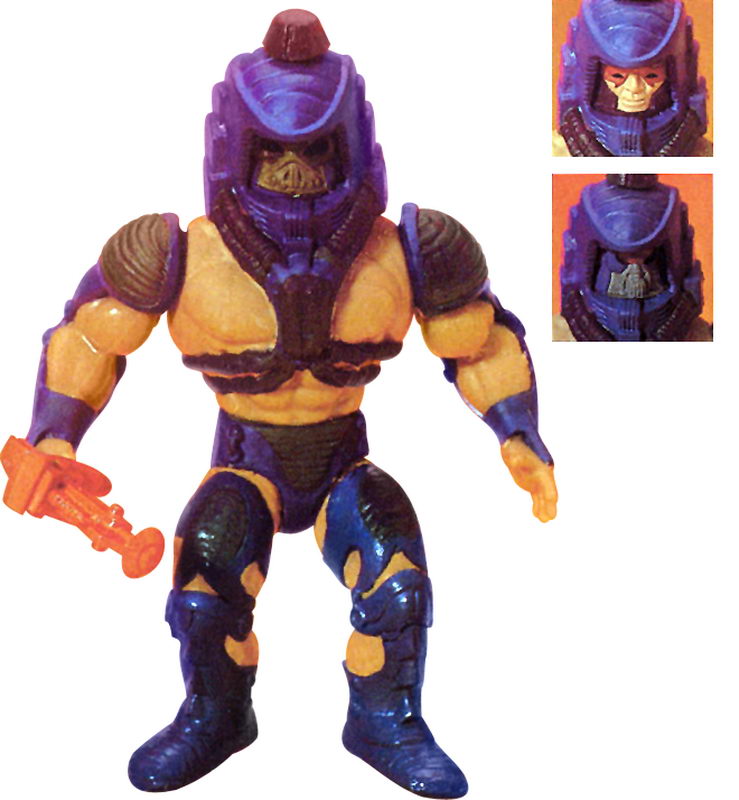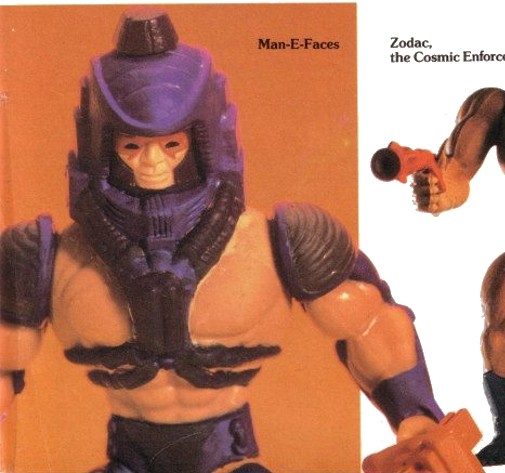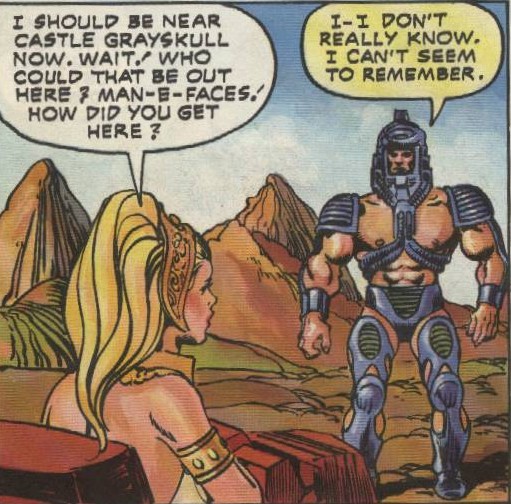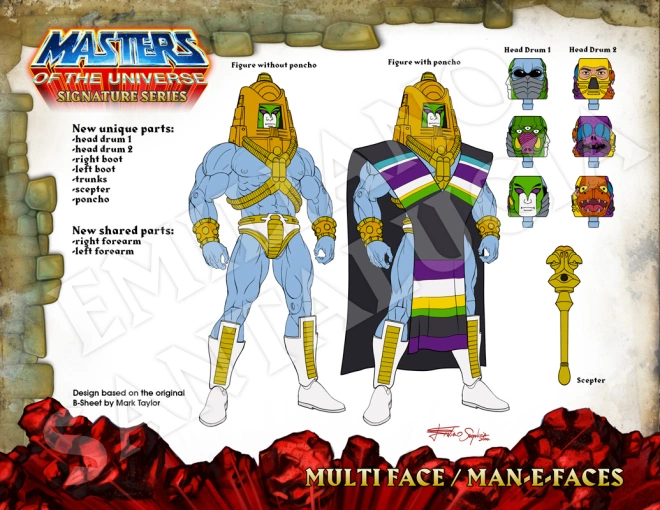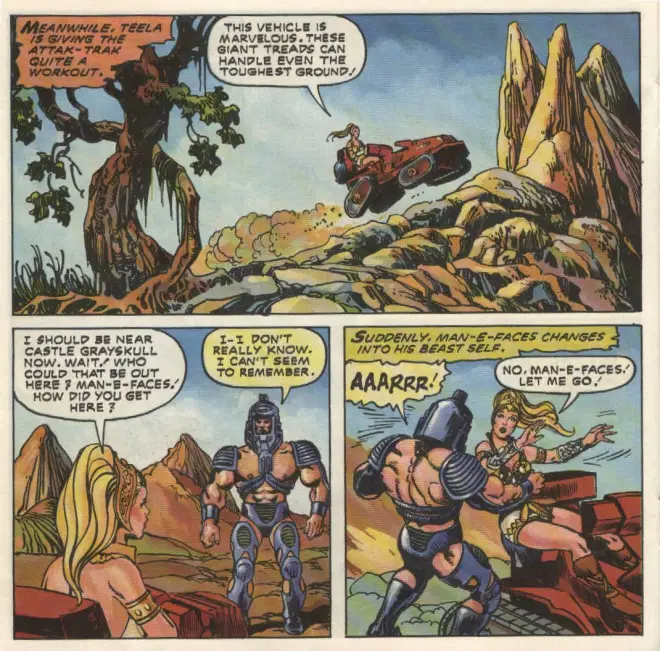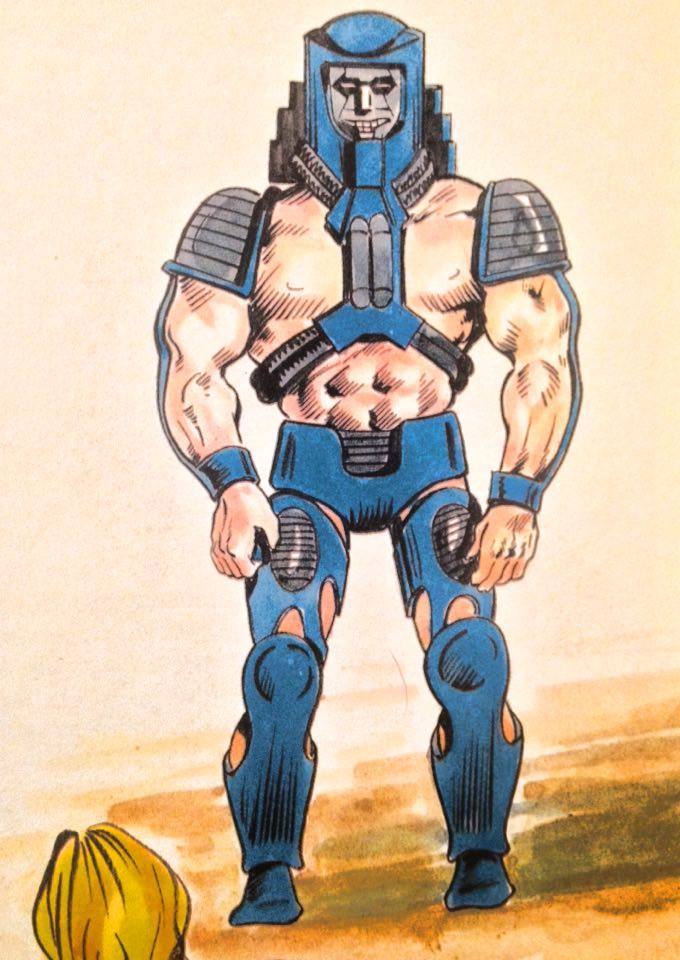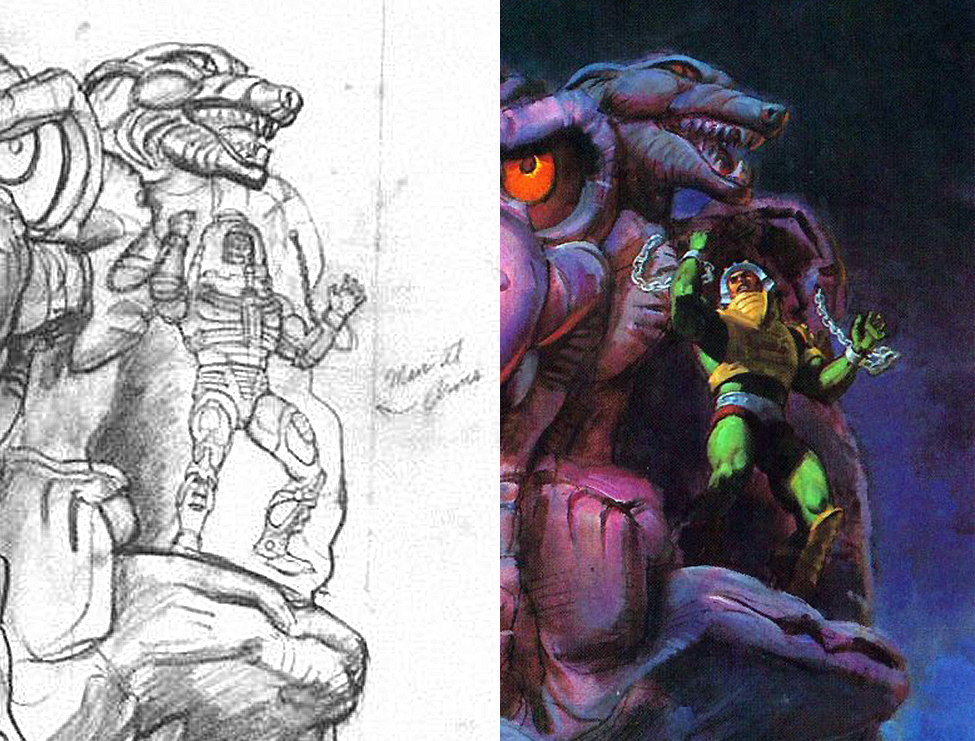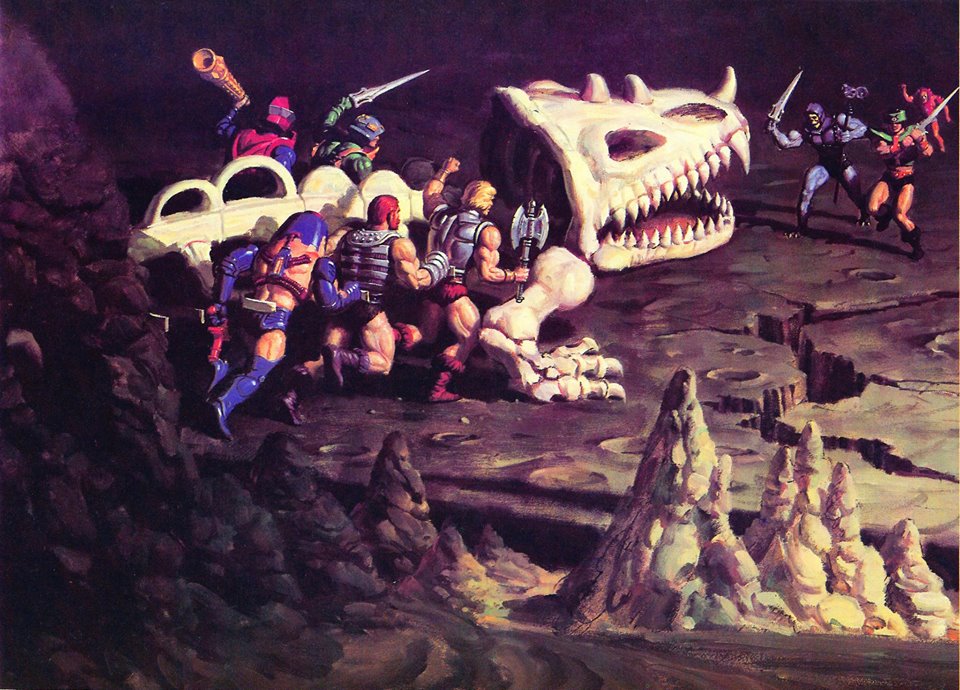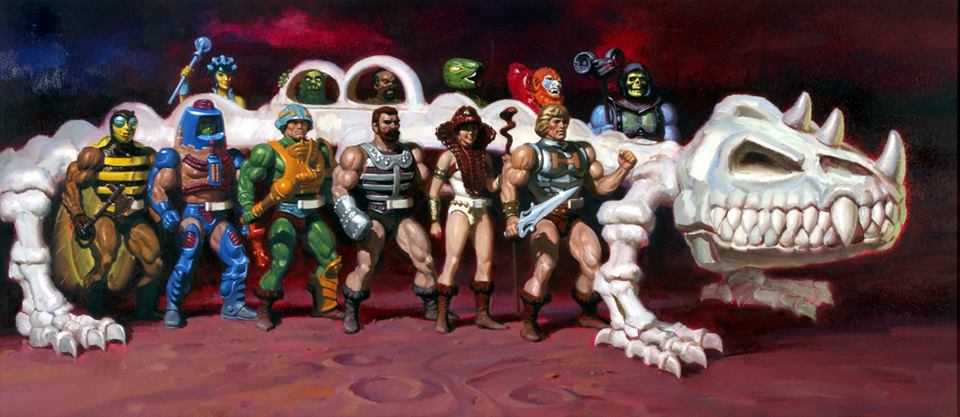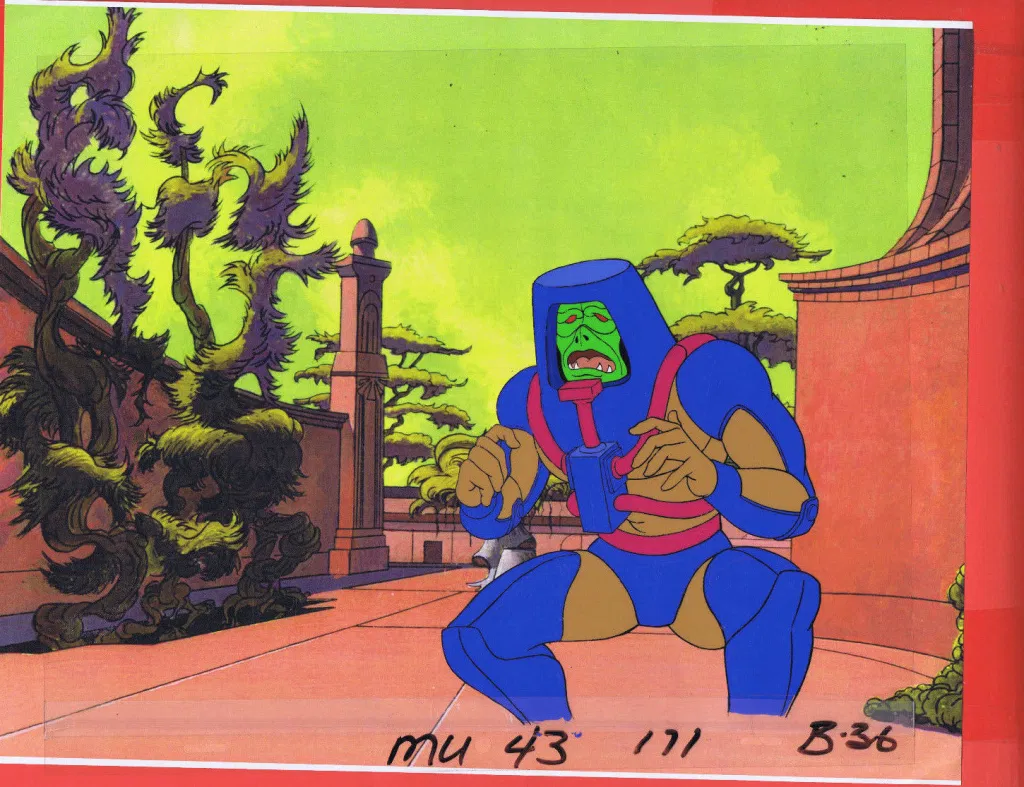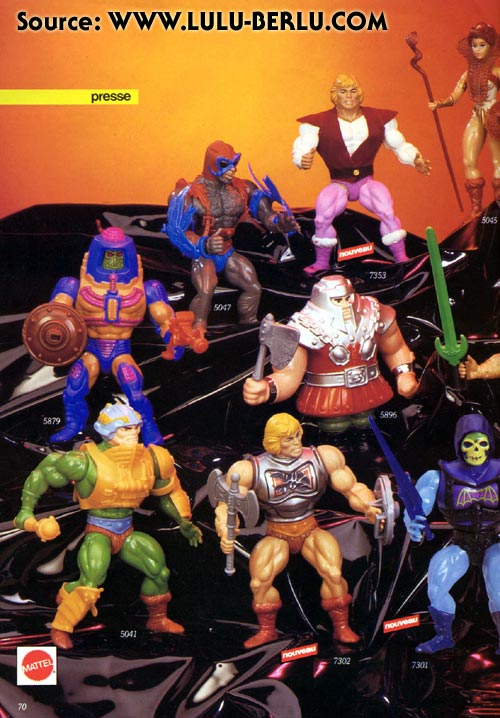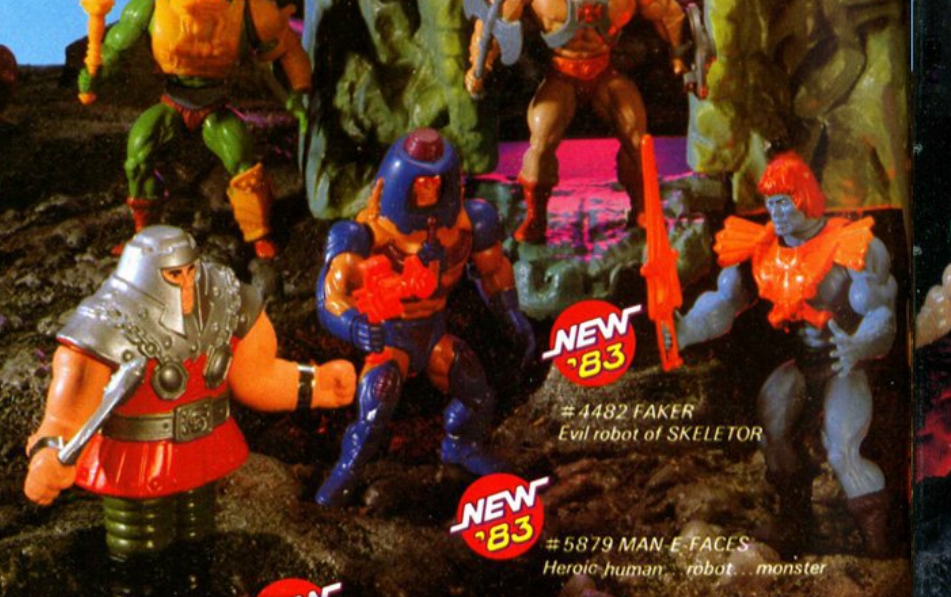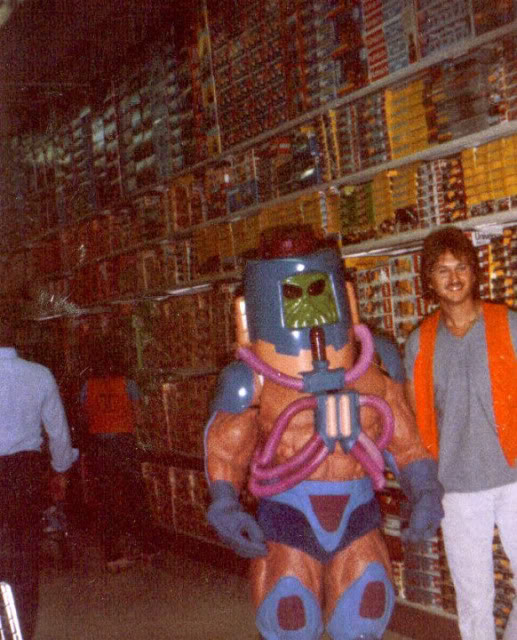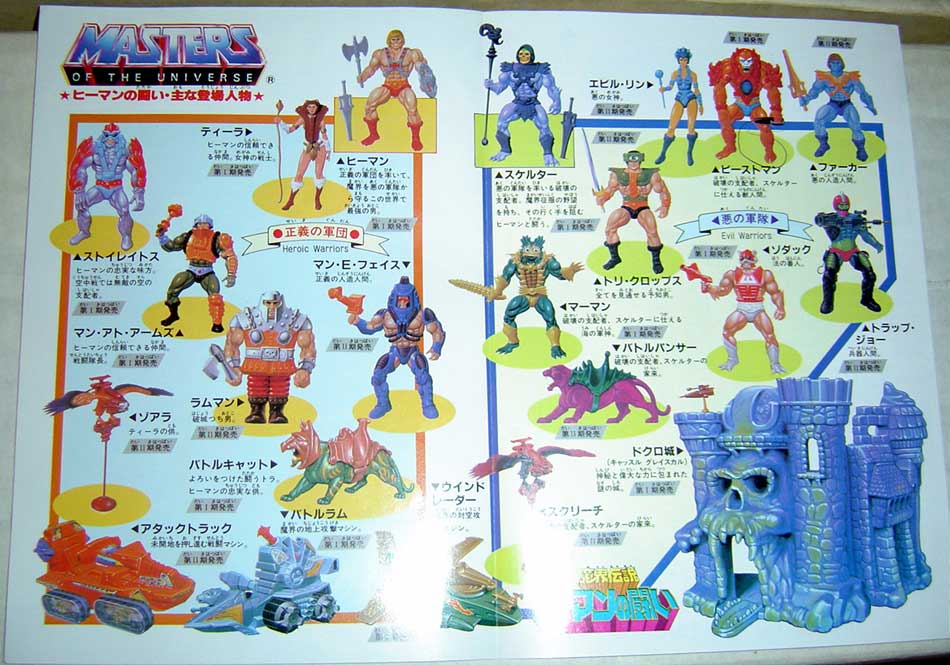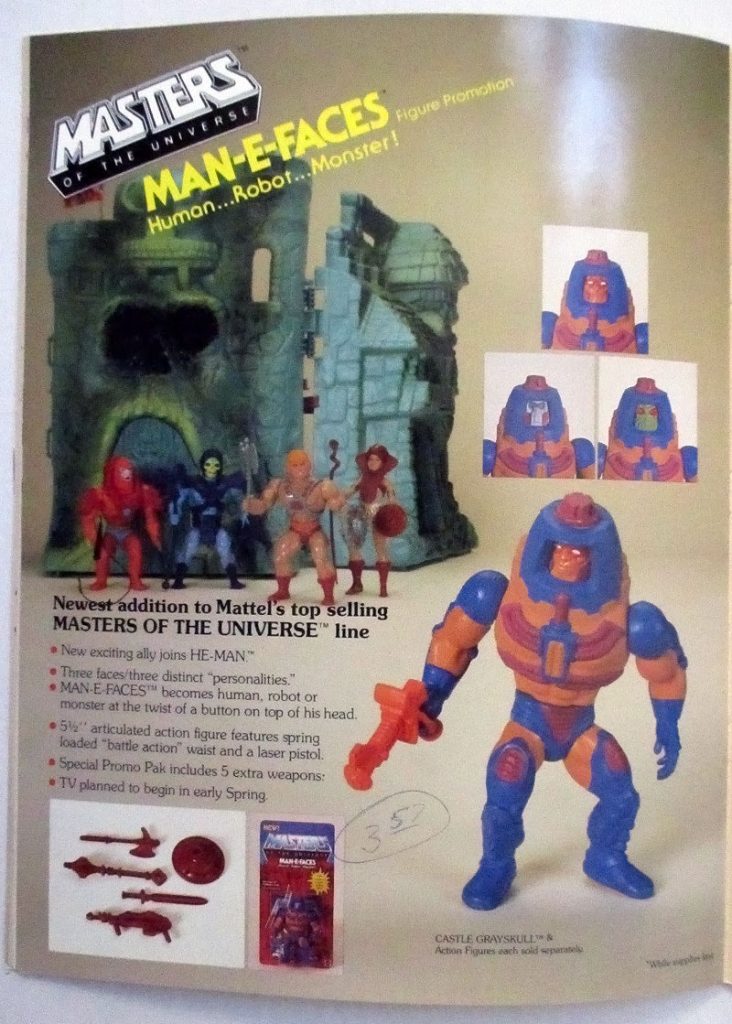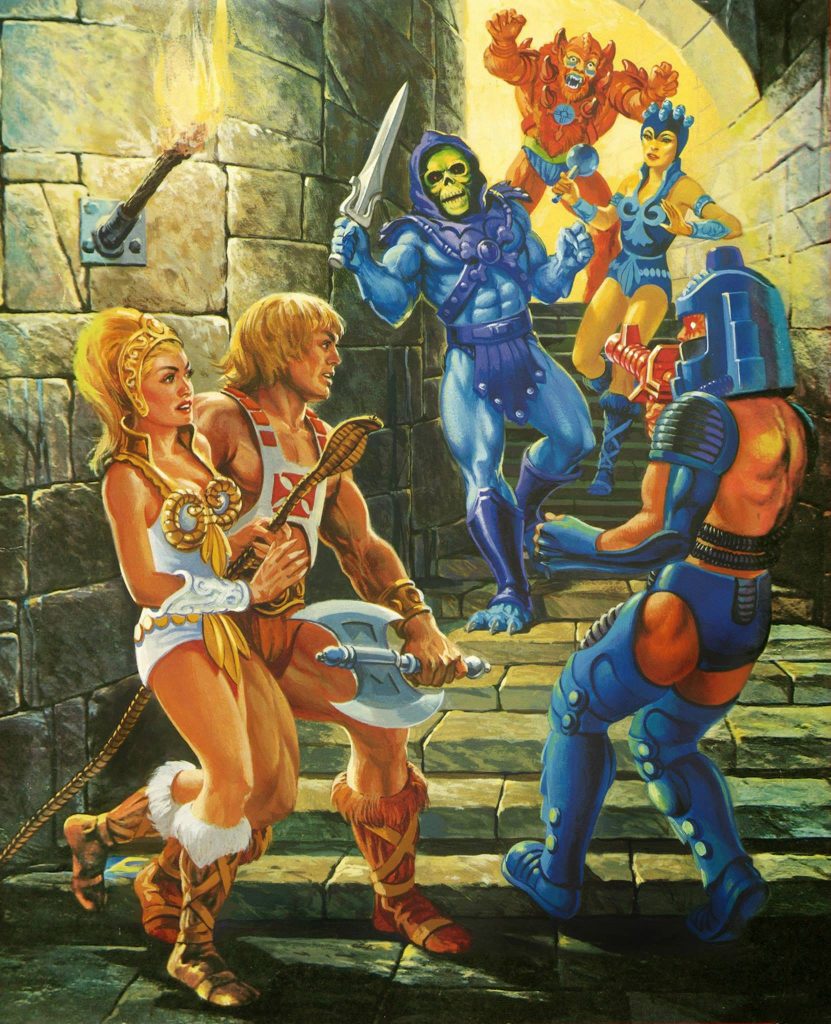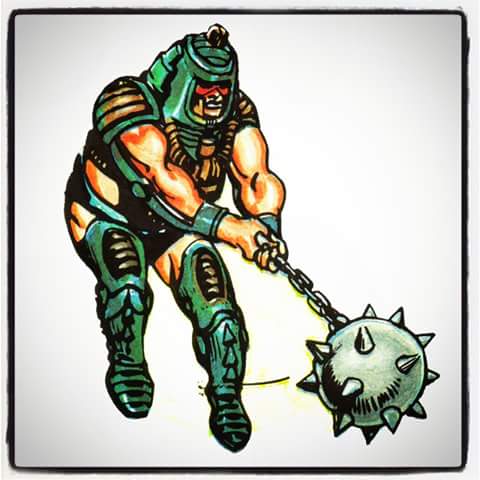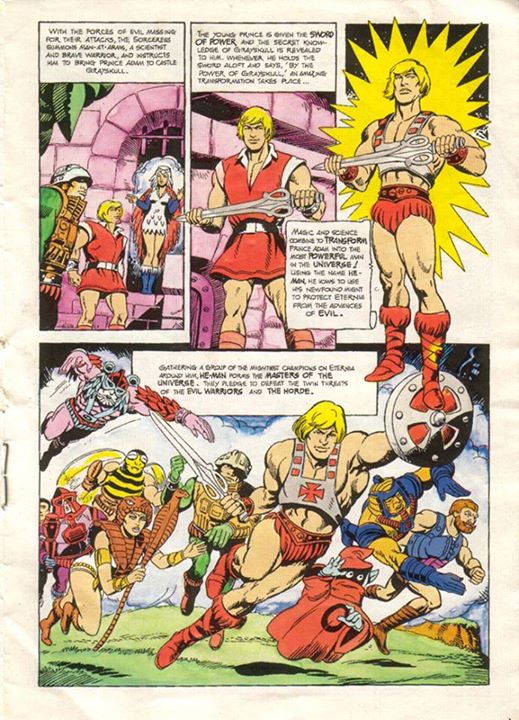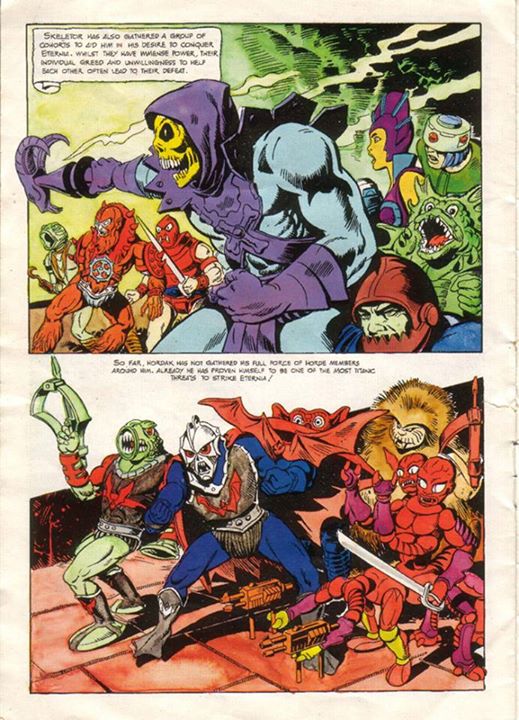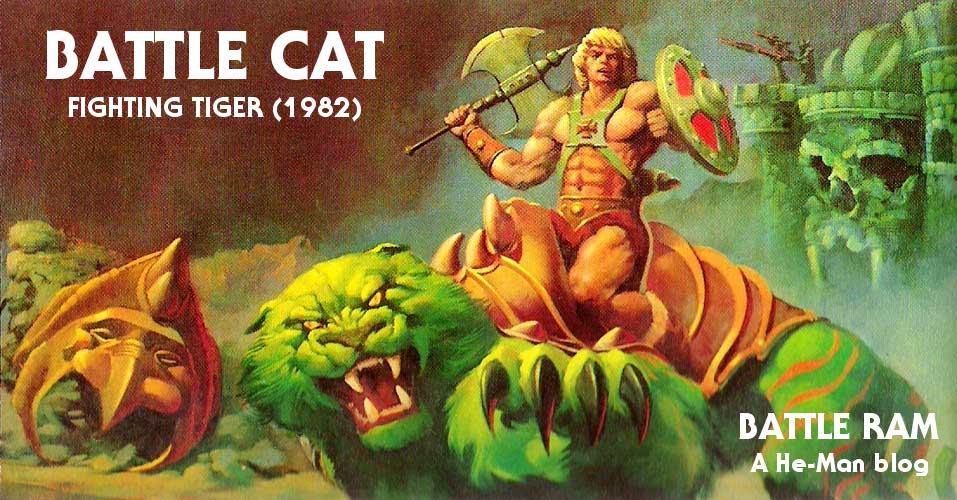
Battle Cat is one of the most iconic characters to come out of the Masters of the Universe line. In fact, when discussing the most famous fantasy steeds to come out of the 1980s, it’s probably a neck and neck race between Battle Cat and Falkor from The Never Ending Story.

One of the first three items released in the original Masters of the Universe toy line (along with He-Man and Skeletor), Battle Cat was a fearsome beast with a bizarre color scheme. Green fur with orange stripes and dark red armor shouldn’t work, but somehow it does. That orange and green theme would show up over and over again in the MOTU line (Man-At-Arms, Wind Raider, Tri-Klops, Filmation’s Palace Guards, etc). My grade school’s colors were also orange and green, so it all made sense to five-year-old me.
There has been much discussion online of Battle Cat’s origins at Mattel. The cat body (an unarticulated statue) originally came from 1976 for the Big Jim on the Tiger Trail set, and was in scale with 10-12” figures. It was first reused for Mattel’s 1978 gift set, Tarzan and the Jungle Cat, before being reused again in 1982 for Battle Cat. Battle Cat’s initial mold and stripe design come from that original 1976 Big Jim Tiger. Update: thanks to NLogan for reaching out to me with some corrected dates.




When Mattel wanted to reuse the mold again for the new MOTU line, something had to be done to explain why it was so huge compared to the relatively small (5.5”) He-Man figure. It was decided that the cat would be used as a steed. Mark Taylor (who designed almost every MOTU product released in 1982) designed a fantasy-themed saddle to allow He-Man to sit on the cat without falling off, and a helmet/mask to further disguise the cat’s origins in the Tarzan and Big Jim lines.
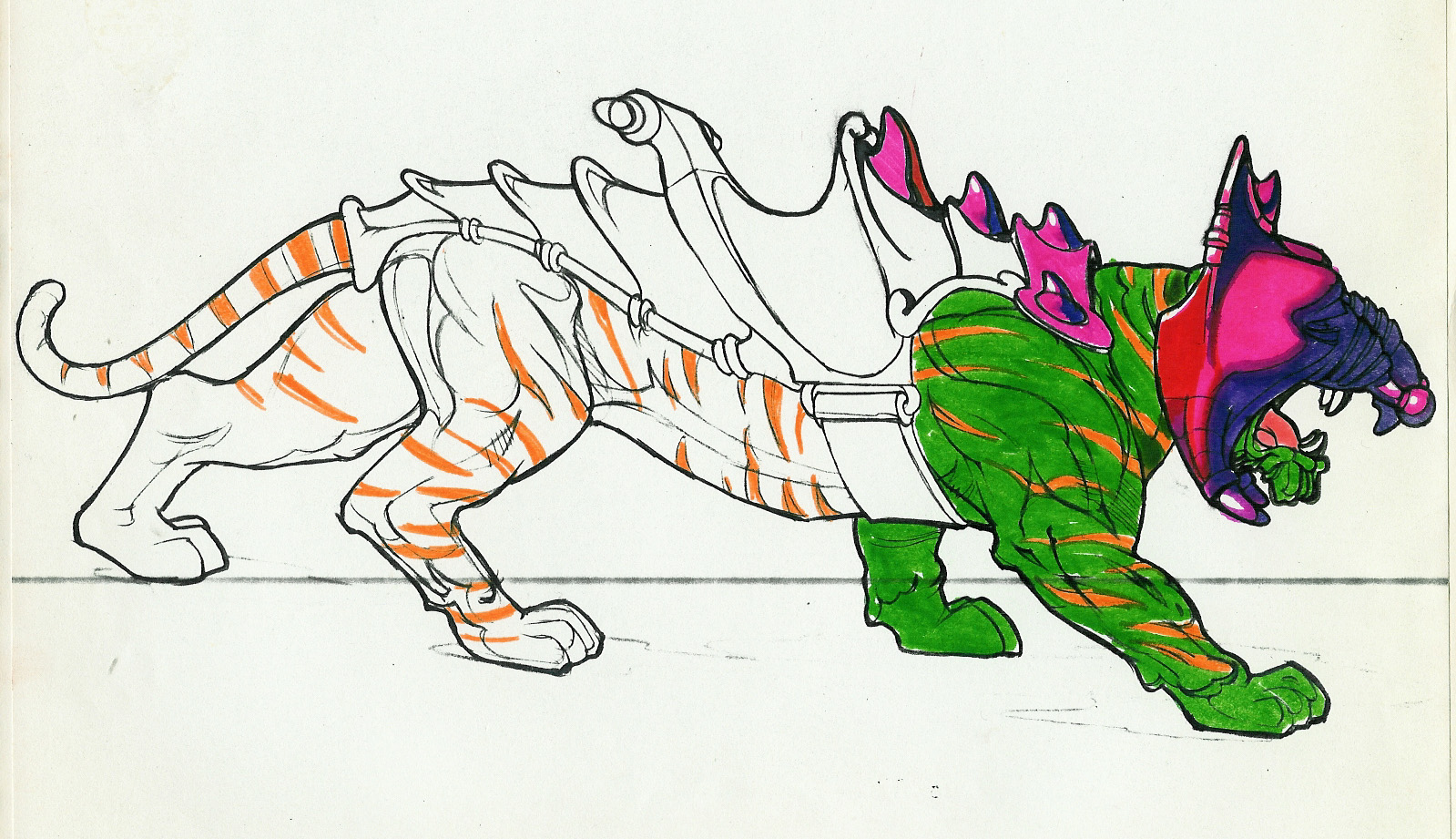
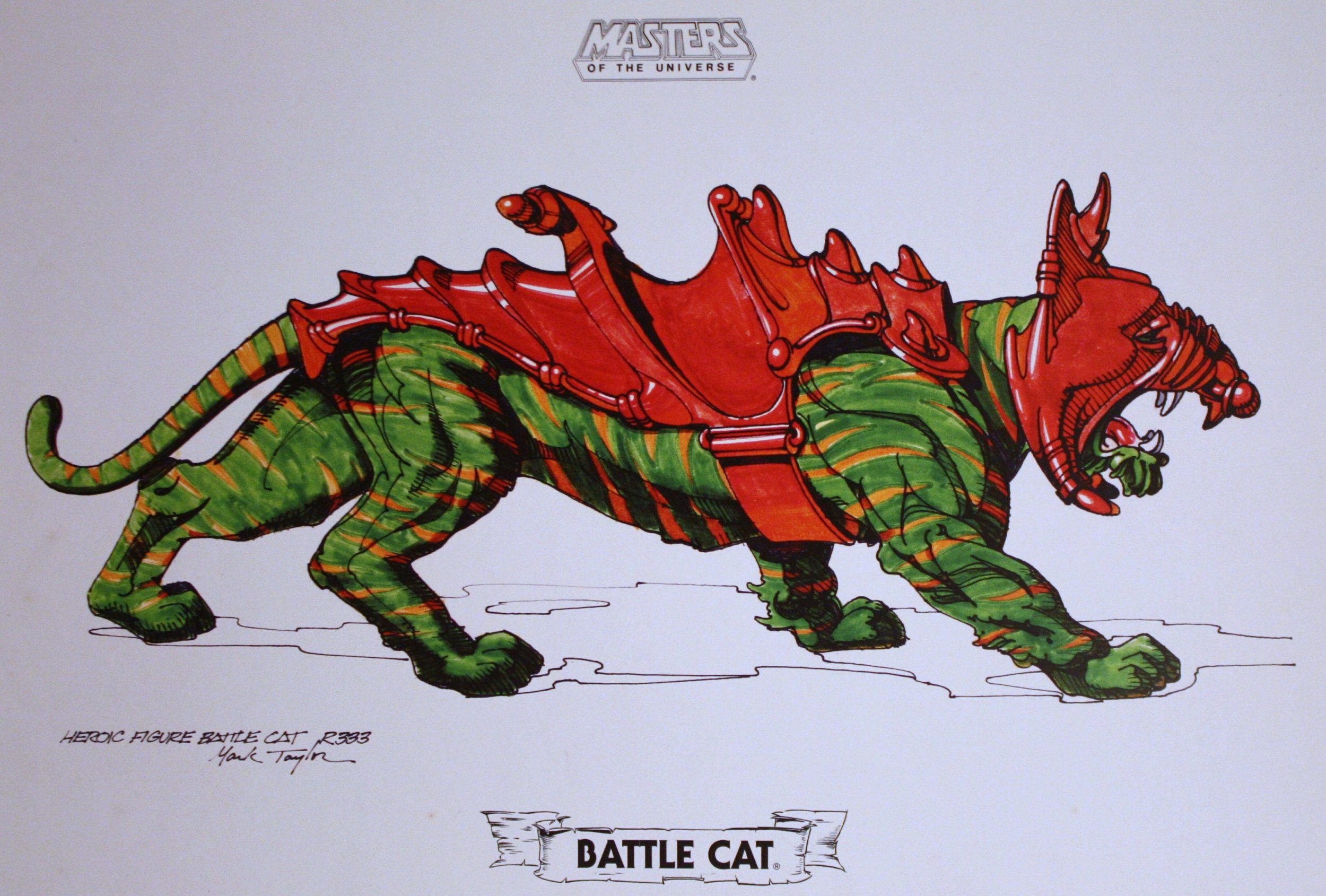
The first prototype Battle Cat appears in the 1982 Mattel dealer catalog, and features a vivid red saddle. The cat itself is hand-painted, and features stripes around the mouth and down the tail:

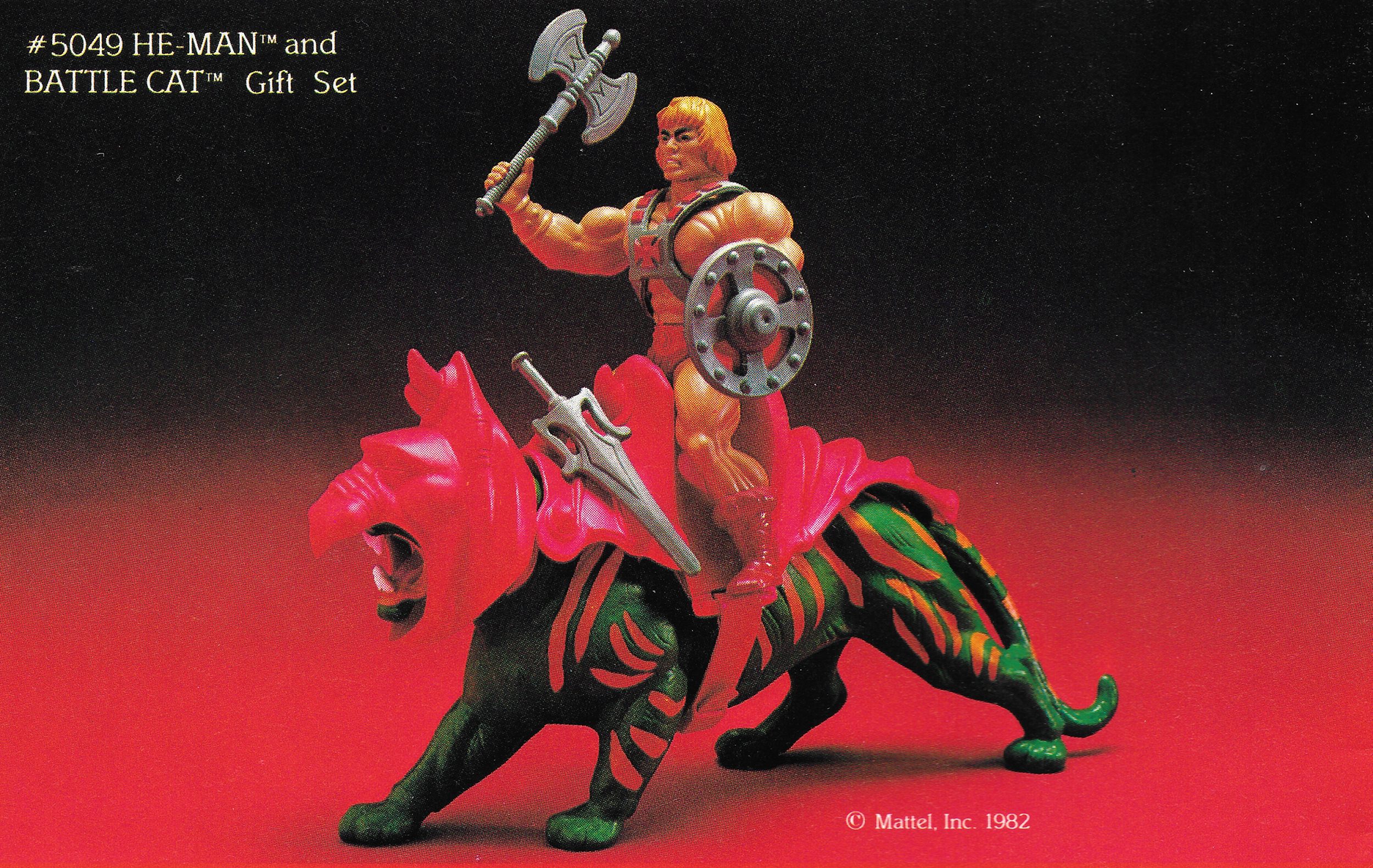
The saddle and helmet were revised to a darker red color, which you can see in the promotional image below, featuring a number of early prototypes:

The very first Battle Cats produced were followed the above color scheme, including the orange paint on the tail and around the mouth. Very few were produced, however, and this version is very difficult to find:


The first Battle Cats, including the striped tail variant, were made in Taiwan. Other early release Taiwan Figures have the same color scheme as the example above, minus the extra stripes on the tail and around the mouth:


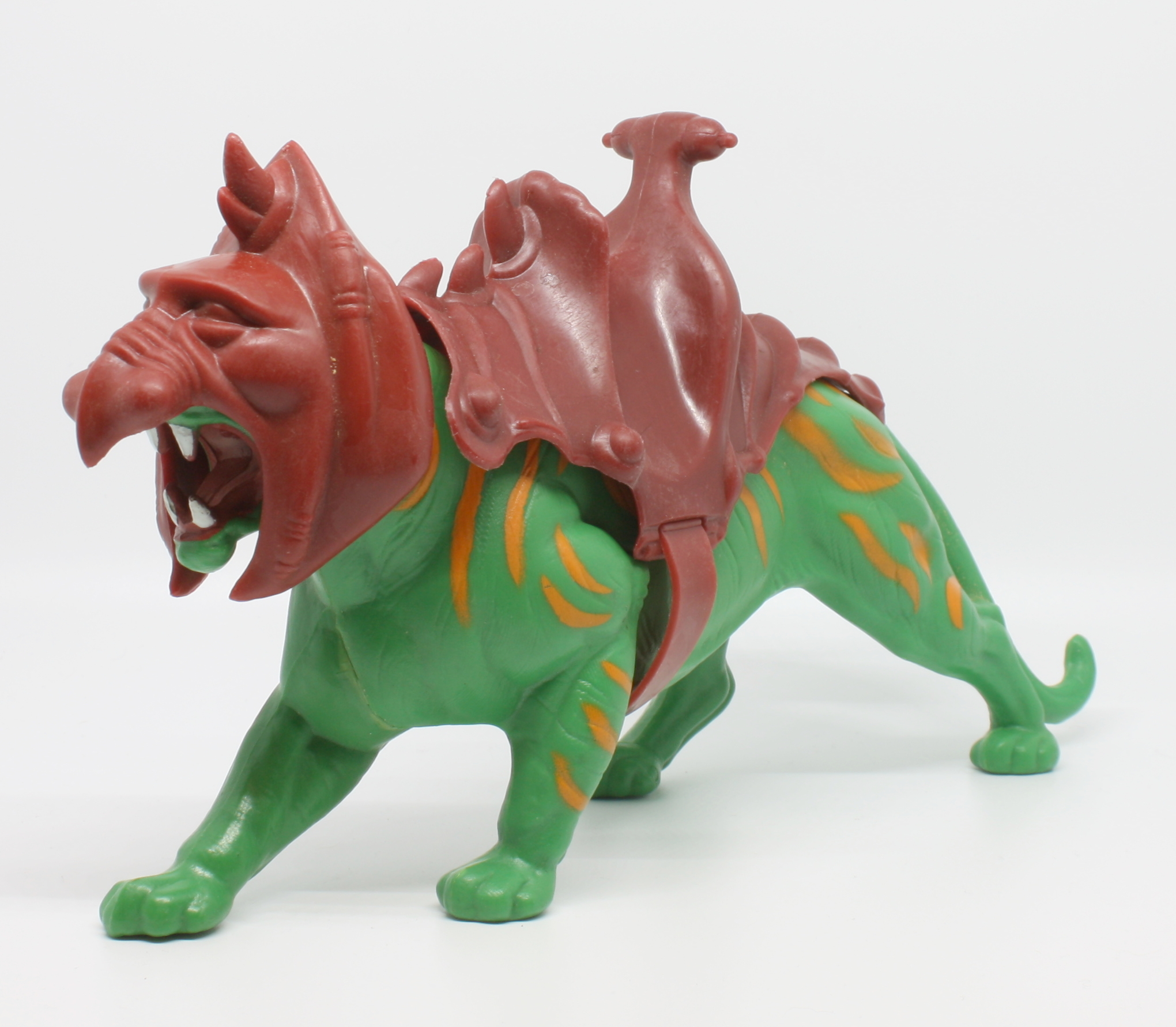


The helmet is striking. As a kid I thought it looked like a stylized bird. Maybe Mark Taylor was going for a griffin look. But it definitely caught my attention. The fact that Battle Cat had no articulation was a bit of a let down at first, but he looked so cool with that saddle and helmet that he soon became one of my favorite toys of all time.
Beginning in 1984, Battle Cat was released with pale yellow stripes instead of the vibrant orange:

In fact, there were a number of different configurations and color schemes released in the many manufacturing plants around the world that Mattel used over the course of the MOTU line:
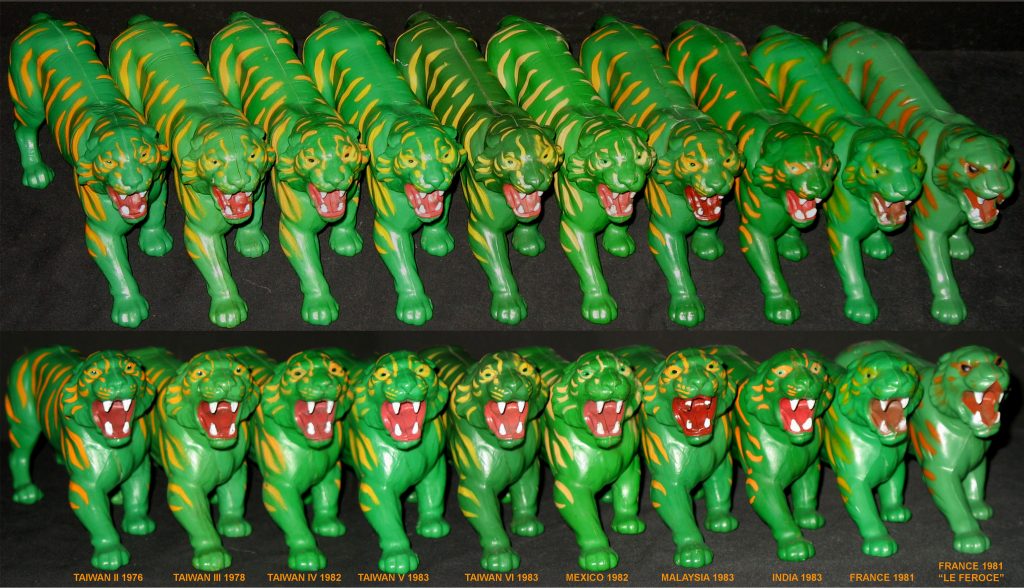
Battle Cat was sold in stores in three different packaging configurations – on his own, in a gift set that included He-Man, and in an another gift set featuring Battle Armor He-Man. The first two were originally sold in 1982 and featured box art by Rudy Obrero. I distinctly remember seeing both at toy stores as a kid, and being bowled over by the figures and the artwork.
The artwork for the single release Battle Cat featured He-Man riding Battle Cat, with no other characters in the picture (aside from some shadowy barbarian figures in the background). Battle Cat’s helmet is off, and Castle Grayskull stands in the background, partially shrouded by mist.


Rudy’s original painting was somewhat darker than what ended up on the final product:
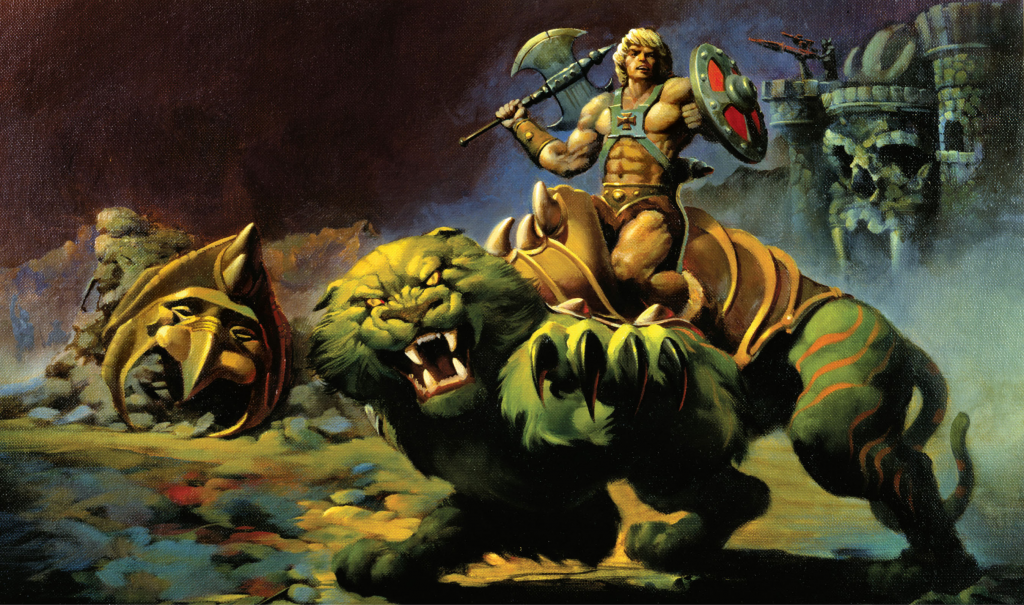
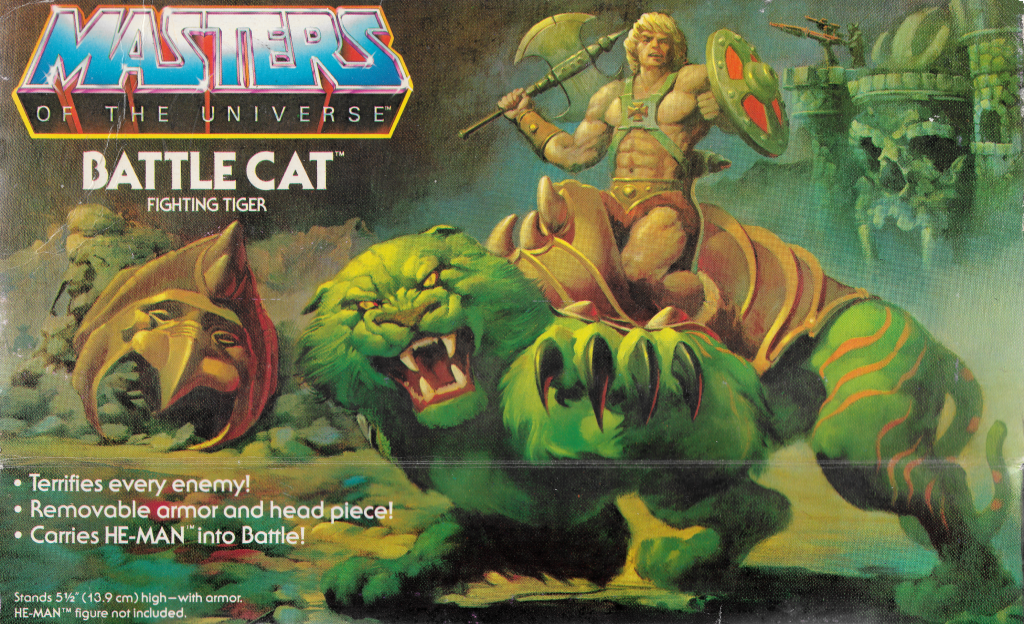
The 1982 gift set artwork was just as amazing, if a little confusing. He-Man is seen riding into battle on a helmeted Battle Cat, and Skeletor and Beast Man are riding their own fighting tigers. Man-At-Arms and Mer-Man are the odd men out. Apparently no one bought them Battle Cats for Christmas. According to designer Mark Taylor in his 2011 panel appearance at Power-Con, Mattel had initially planned to put out a gift set with Skeletor and Battle Cat, so that makes his appearance as a rider of a Battle Cat more understandable.

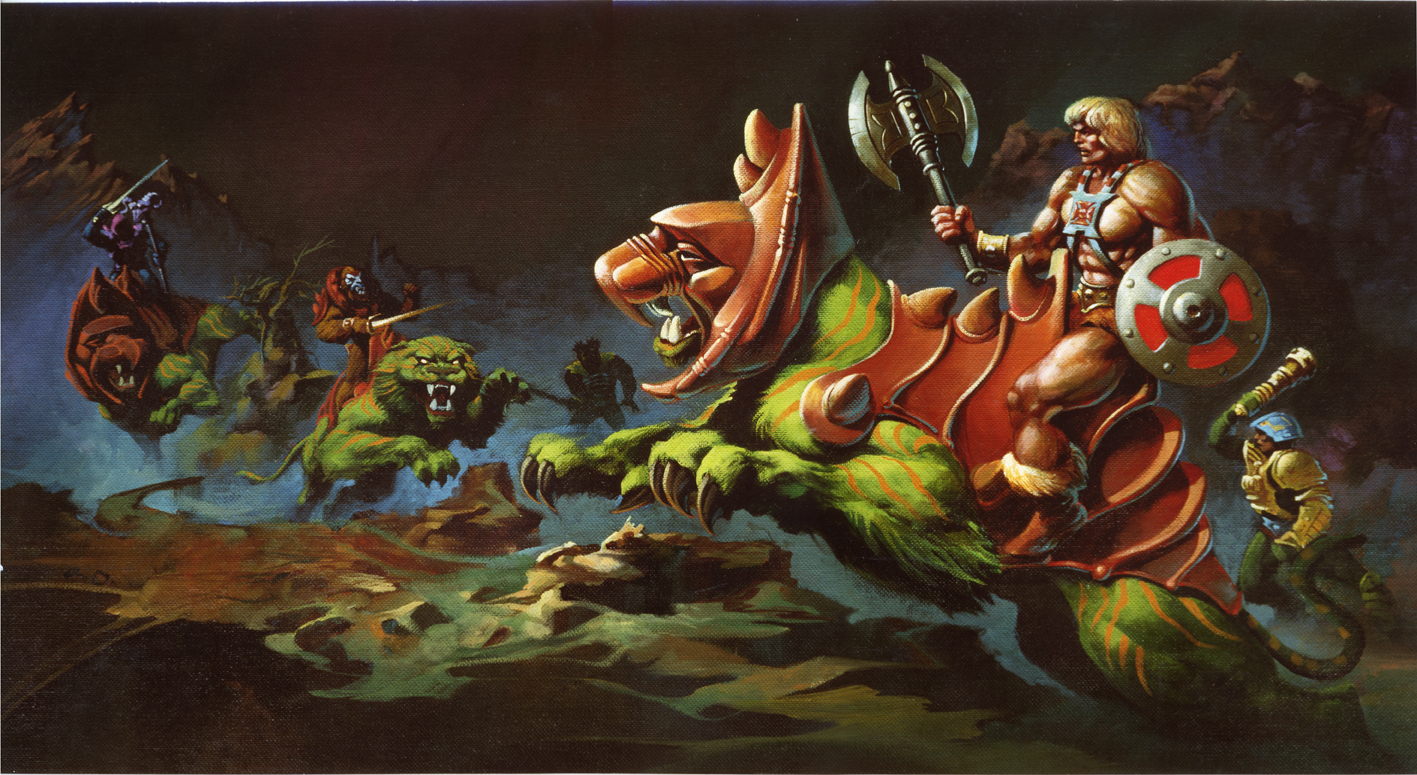
When Rudy Obrero was given the models to use as references for the artwork, he was provided with no details as to the story line, which is why he also painted things like Skeletor defending Castle Grayskull and He-Man ripping out the side of Castle Grayskull with the Wind Raider. Really, though, that doesn’t contract early canonical ideas about the castle, which could be held and defended by either the heroes or the villains.
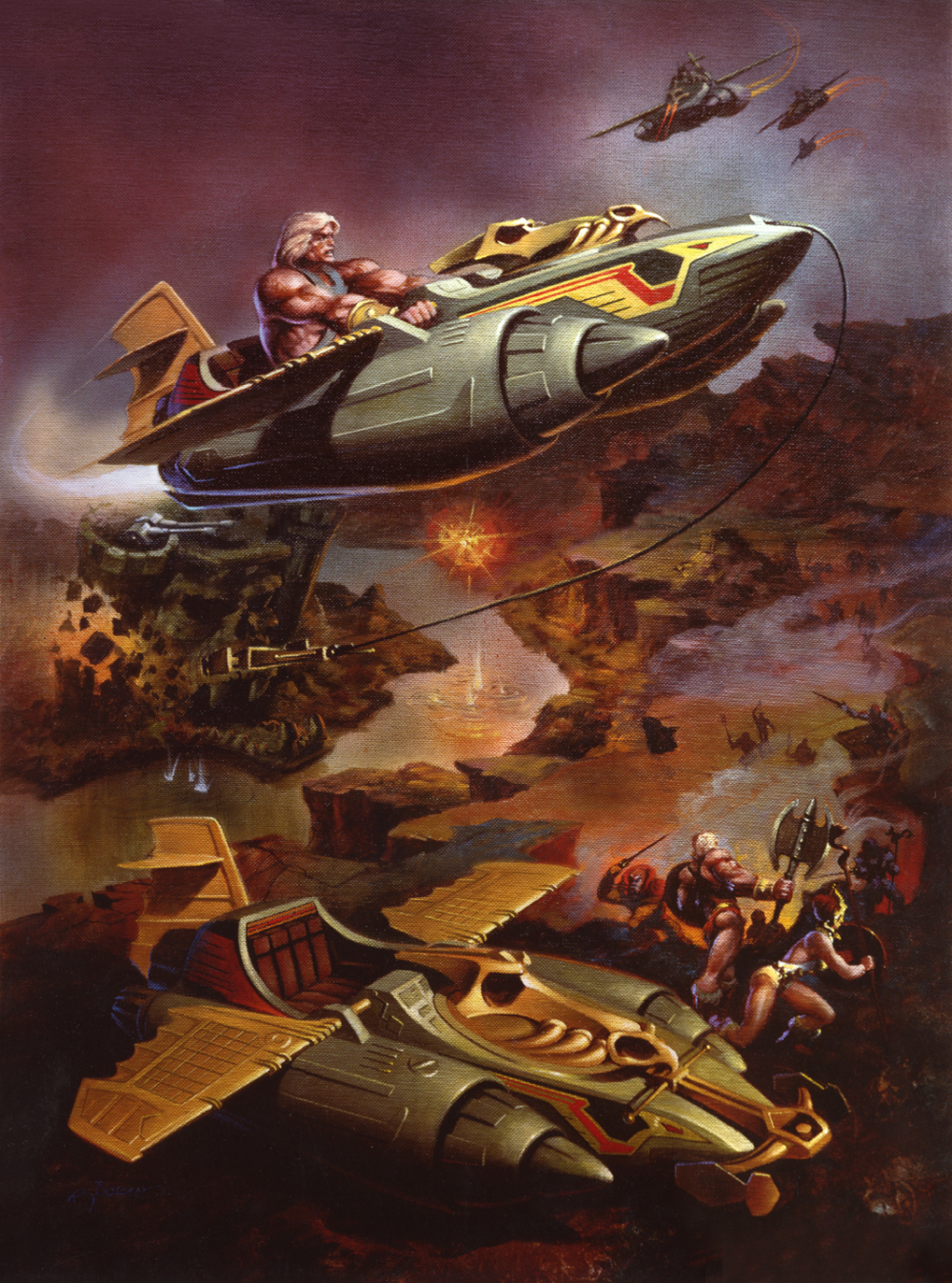
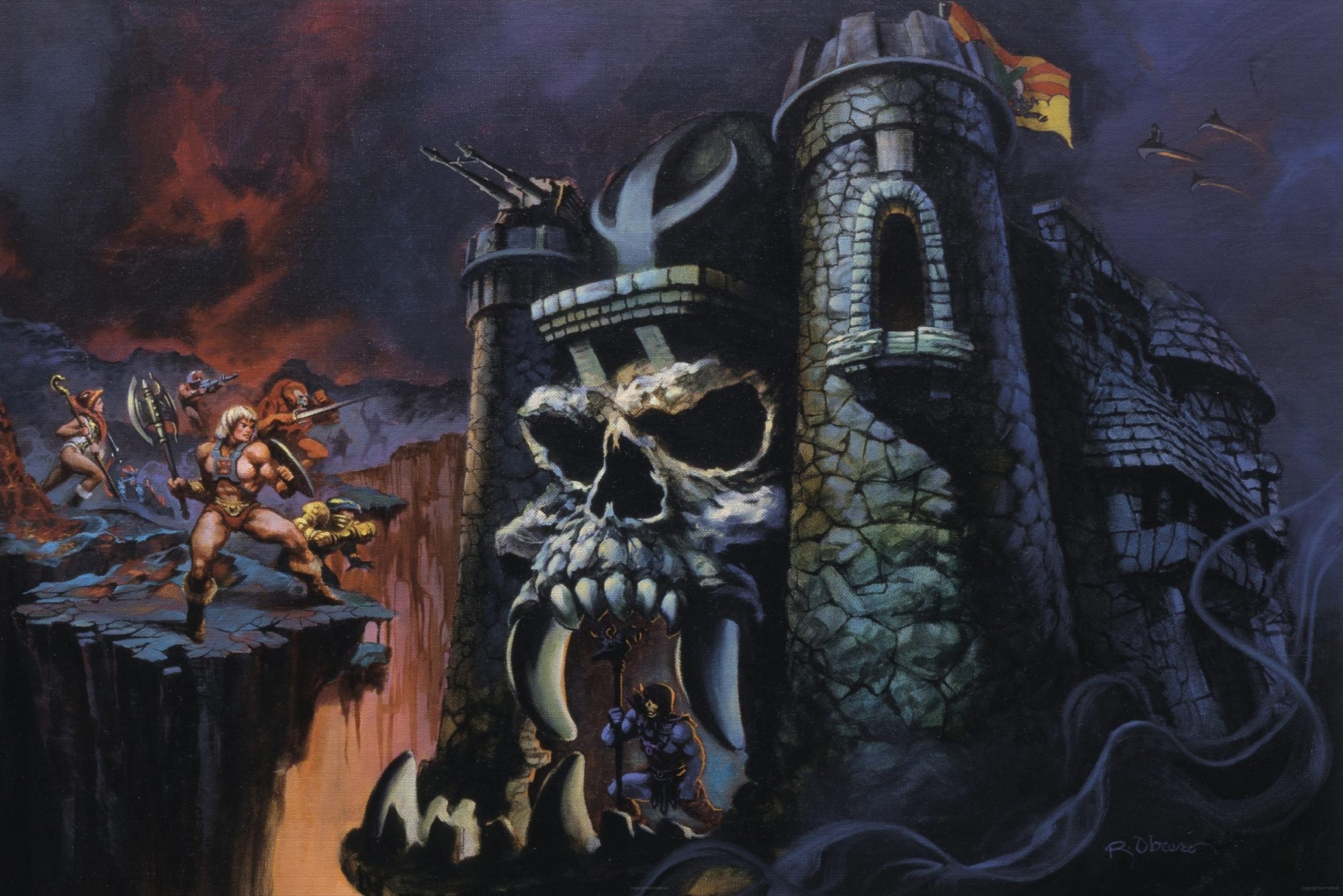
The Battle Armor He-Man and Battle Cat gift set came out in 1984, a year after Rudy had stopped working with Mattel. By this time William George was producing box art for MOTU pretty regularly, and the piece he produced for this set is absolutely fantastic:



He-Man and Battle Cat were practically inseparable in most published media. He-Man was often depicted driving the many vehicles produced for the line, but more often than not, if the most powerful man in the universe wasn’t walking, he was riding his green and orange steed.
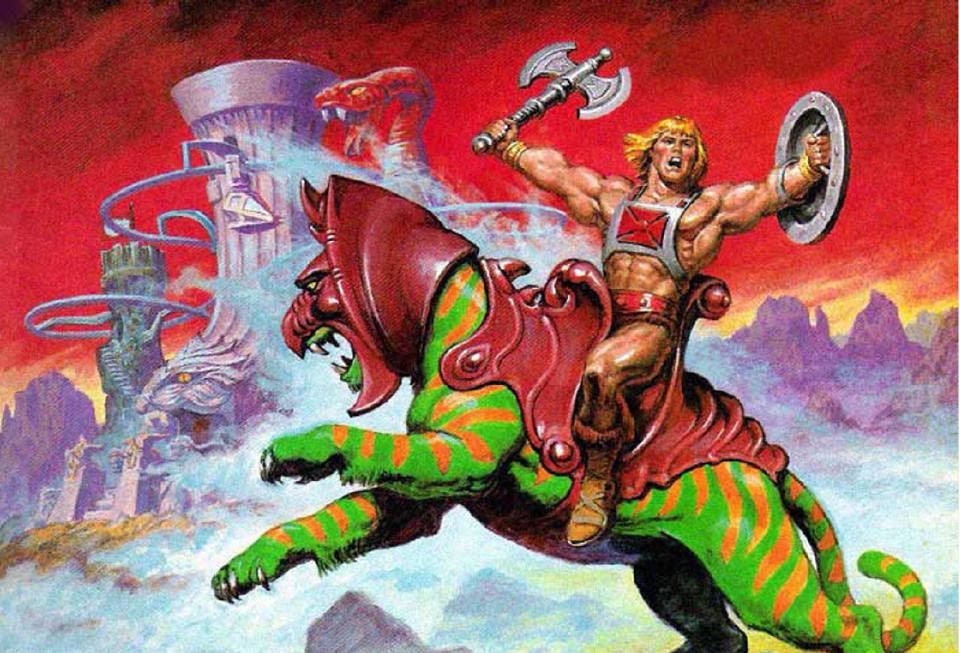

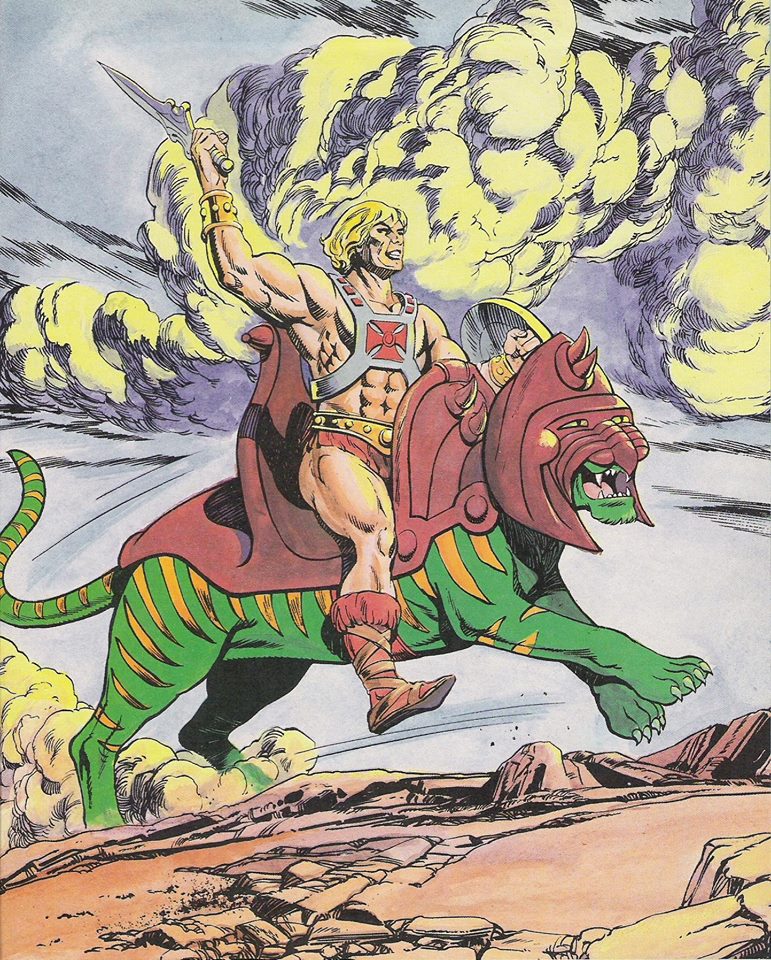

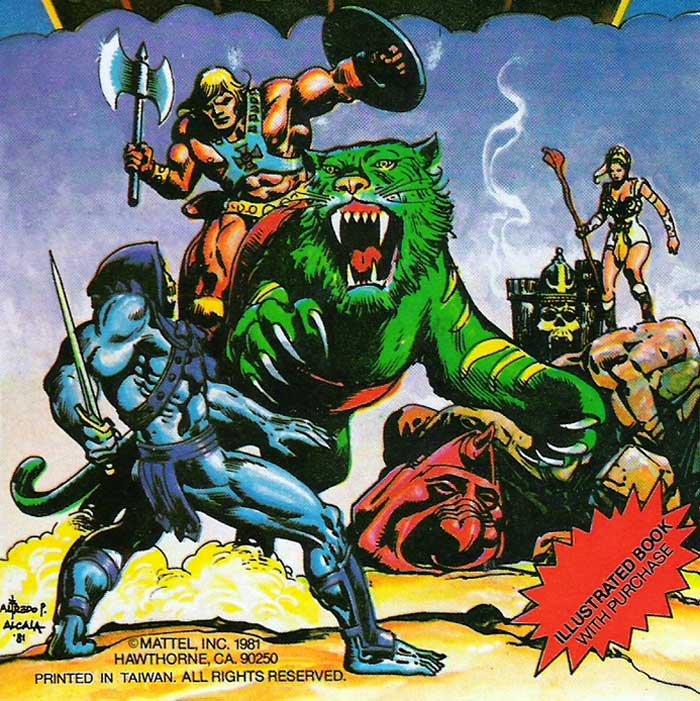
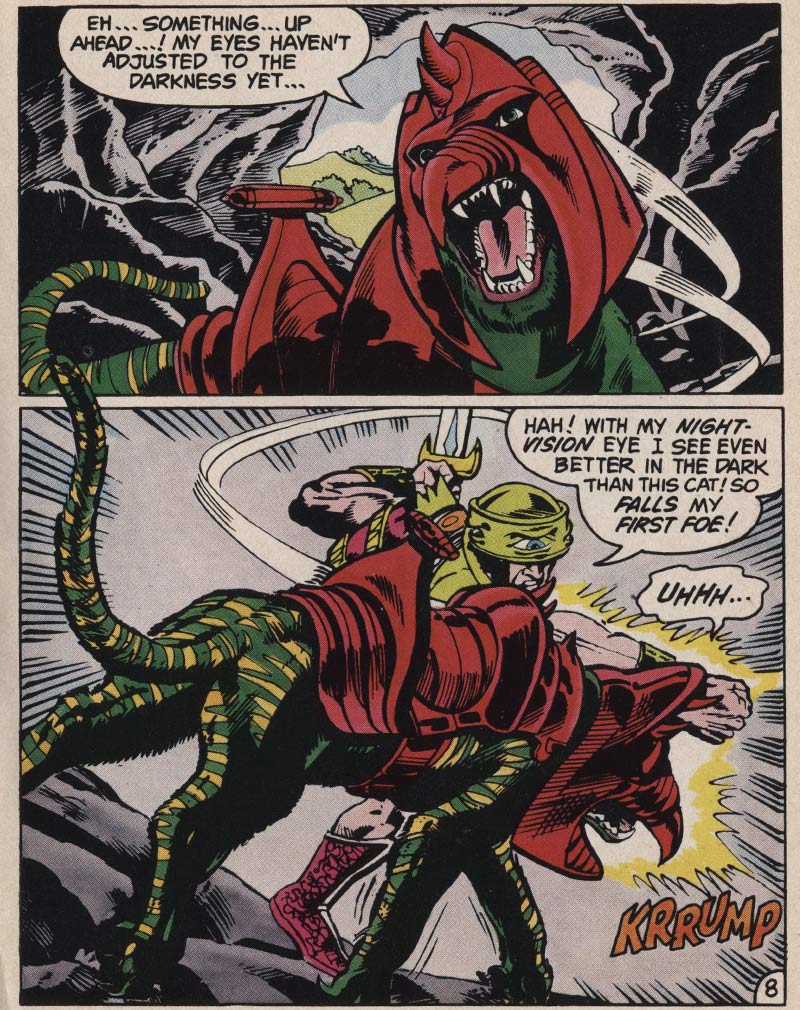
The concept of Cringer as Battle Cat’s mild mannered alter ego was introduced in the 1982 DC Comics series, starting with “From Eternia With Death.” This is also the first time that Battle Cat is portrayed as having the power of speech:
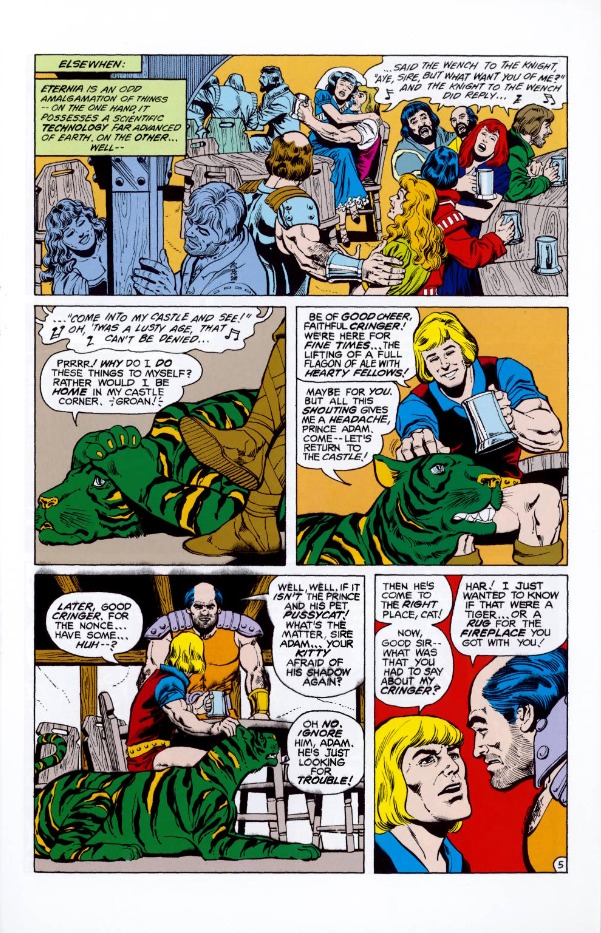
Filmation in particular put Battle Cat to frequent use. Every episode began with a transformation sequence that featured the cowardly Cringer transforming into the ferocious fighting tiger. By comparison, Skeletor was rarely depicted with his equivalent steed, Panthor.

Battle Cat also featured prominently in Filmation’s 1982 MOTU commercial, as well as in its style guide and series guide:


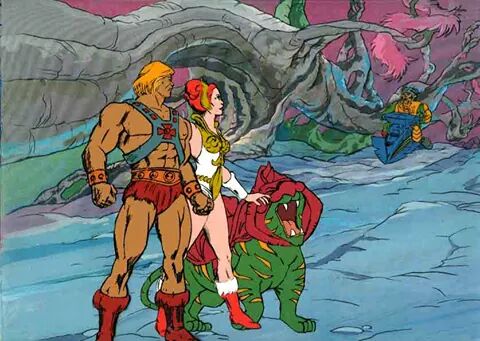
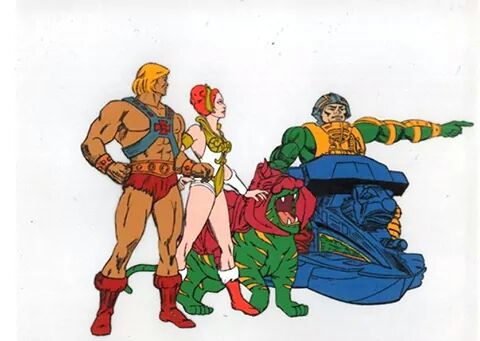
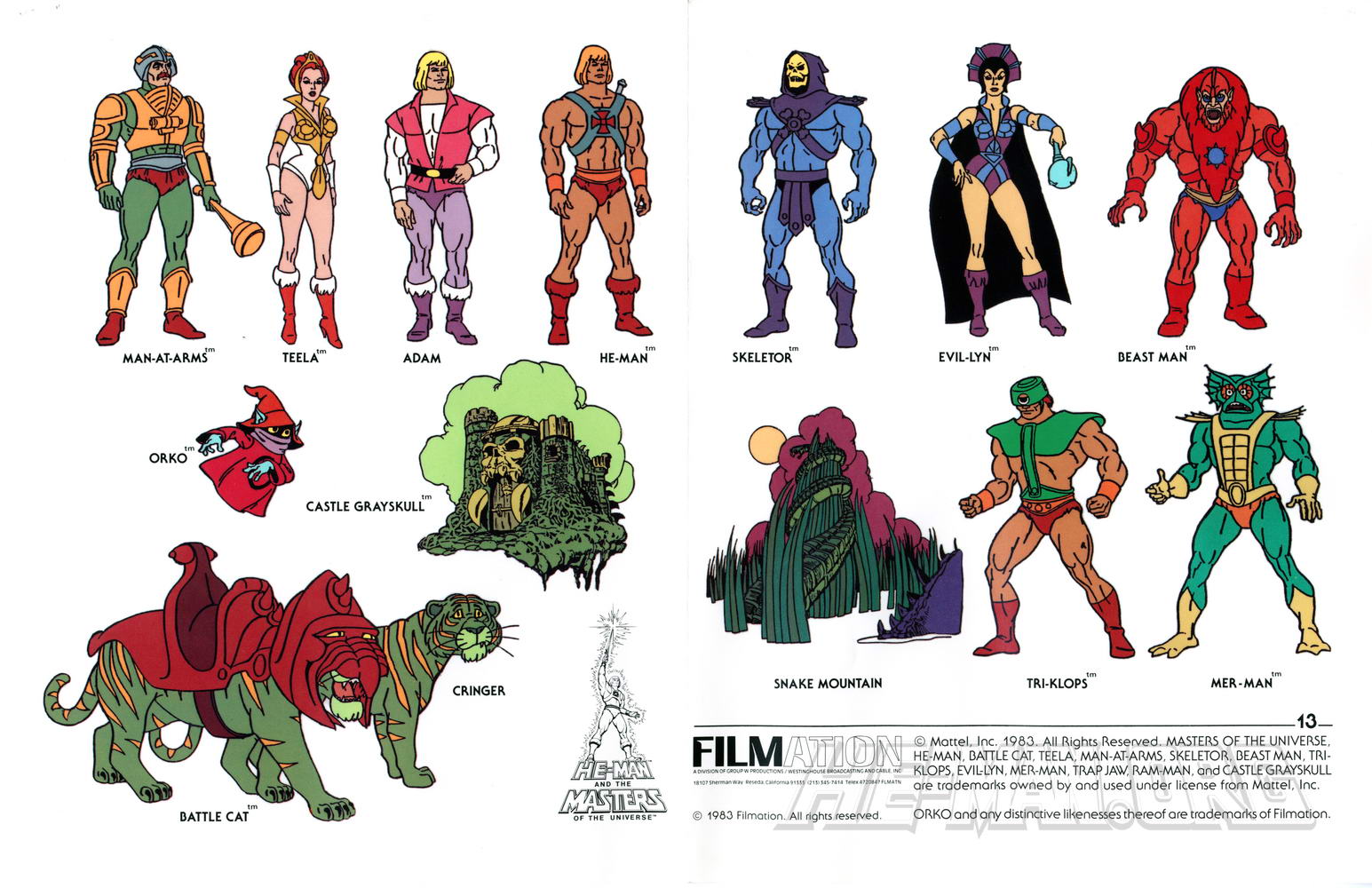
If you ask the average person on the street to name any character from the MOTU series, probably one of the top three or four names mentioned would be Battle Cat’s. It’s no wonder then that Battle Cat also turned up in a lot of MOTU-themed merchandise over the years.
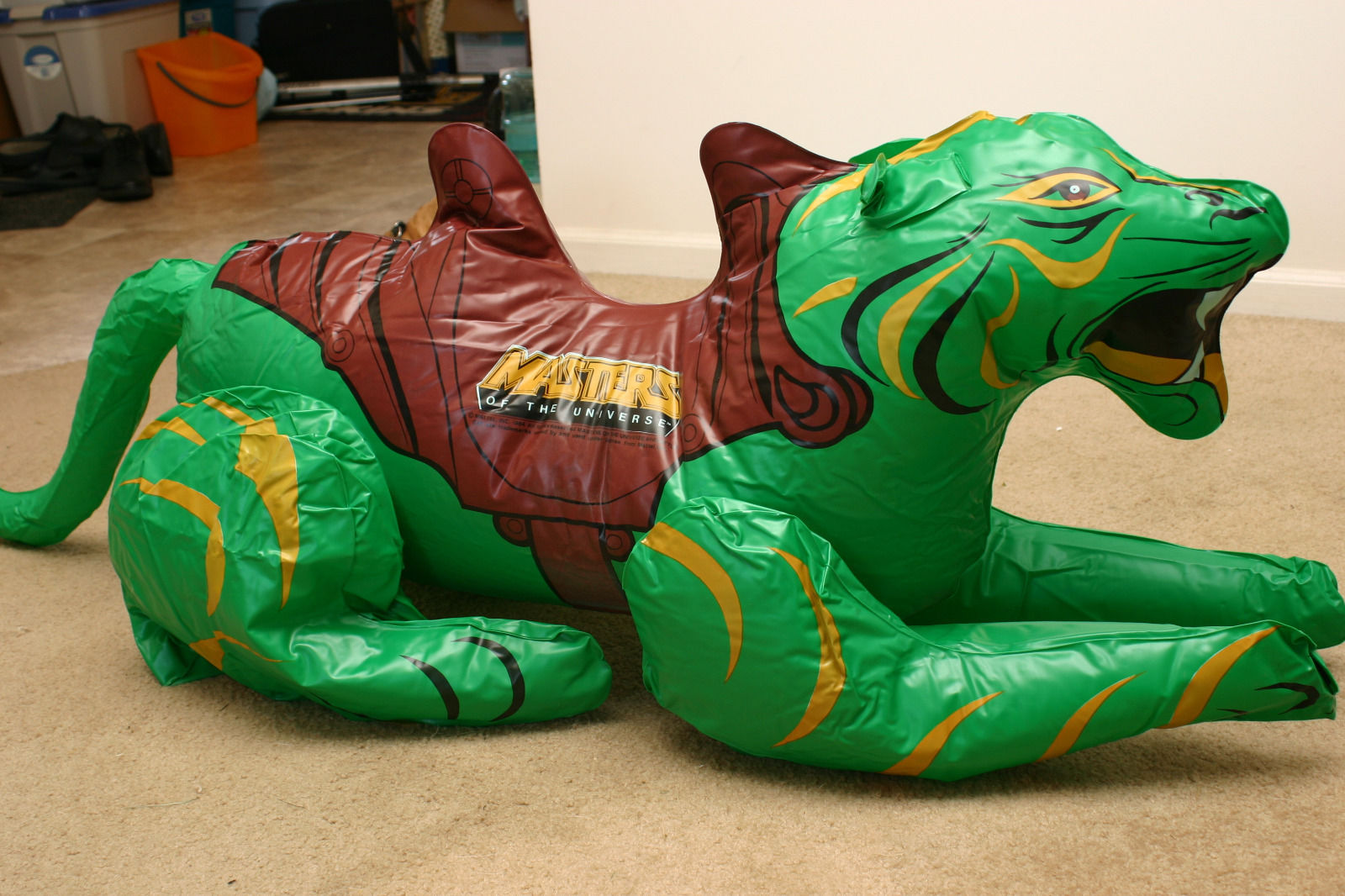



Battle Cat was, of course, heavily featured in a number of ads and catalogs as well. He was no doubt a consistent seller throughout the duration of the toy line. Not bad for a character that was created as a means to recycle an old mold and flesh out the fledgling MOTU toy line without much capital risk in the first year. If Masters of the Universe excelled at anything, it was making soup from stones.
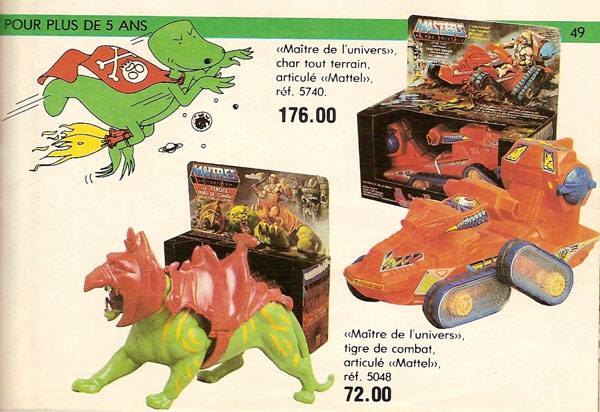
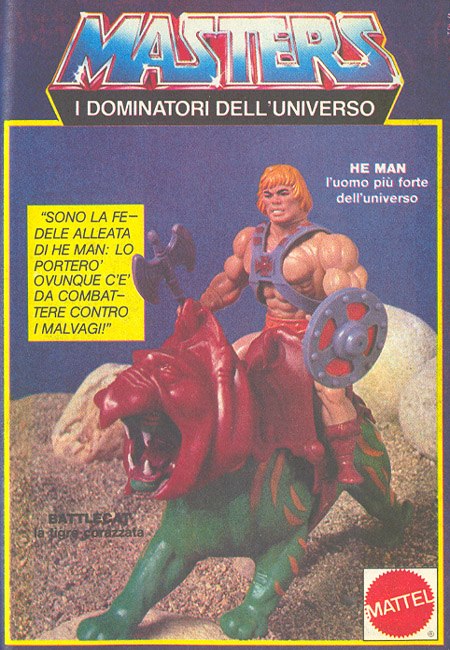
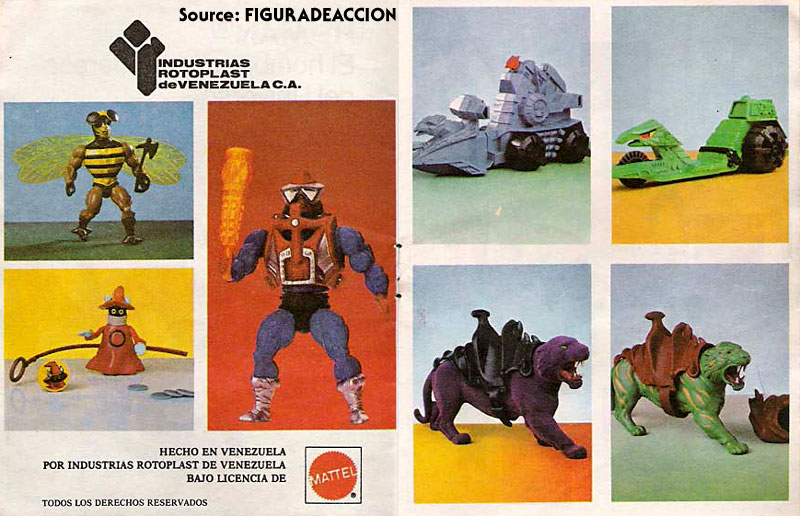

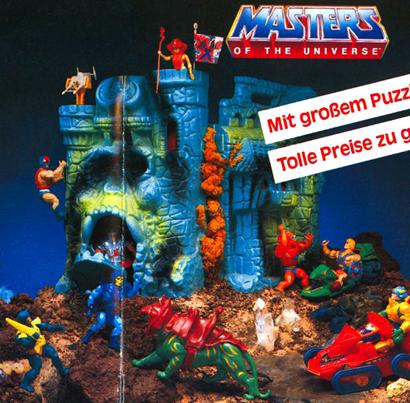
Want to support the blog? Consider becoming a Patreon supporter. You’ll also gain access to exclusive content and early access to posts on the blog. Alternatively, you can do your toy shopping through my Entertainment Earth affiliate link, below. Thank you!
